The History Book Club discussion

This topic is about
Unreasonable Men
PRESIDENTIAL SERIES
>
OPEN - SPOTLIGHT - PRESIDENTIAL SERIES - GLOSSARY - UNREASONABLE MEN ~ (Spoiler Thread)
 Brownsville Affair
Brownsville Affair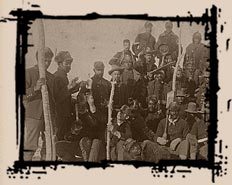
Brownsville Affair, (1906), racial incident that grew out of tensions between whites in Brownsville, Tex., U.S., and black infantrymen stationed at nearby Fort Brown. About midnight, Aug. 13–14, 1906, rifle shots on a street in Brownsville killed one white man and wounded another. White commanders at Fort Brown believed all the black soldiers were in their barracks at the time of the shooting; but the city’s mayor and other whites asserted that they had seen black soldiers on the street firing indiscriminately, and they produced spent shells from army rifles to support their statements. Despite evidence that the shells had been planted as part of a frame-up, investigators accepted the statements of the mayor and the white citizens.
When the black soldiers insisted that they had no knowledge of the shooting, President Theodore Roosevelt ordered 167 black infantrymen discharged without honour because of their conspiracy of silence. His action caused much resentment among blacks and drew some criticism from whites, but a U.S. Senate committee, which investigated the episode in 1907–08, upheld Roosevelt’s action.
The Brownsville Affair has ever since been a matter of controversy, and with the rise of the civil rights movement it became a matter of embarrassment to the army. After the publication in 1970 of John D. Weaver’s The Brownsville Raid, which argued that the discharged soldiers had been innocent, the army conducted a new investigation and, in 1972, reversed the order of 1906.
(Source: Britannic.com)
More:
https://en.wikipedia.org/wiki/Brownsv...
http://www.pbs.org/wnet/jimcrow/stori...
https://tshaonline.org/handbook/onlin...
http://newsone.com/2674947/brownsvill...
https://lcrm.lib.unc.edu/blog/index.p...
https://dmna.ny.gov/historic/articles...
 by Ricardo Malbrew (no photo)
by Ricardo Malbrew (no photo) by Gary Gerstle (no photo)
by Gary Gerstle (no photo) by
by
 Wil Haygood
Wil Haygood by
by
 Edmund Morris
Edmund Morris by
by
 Harry Lembeck
Harry Lembeck
 Secretary of the Interior James Garfield
Secretary of the Interior James Garfield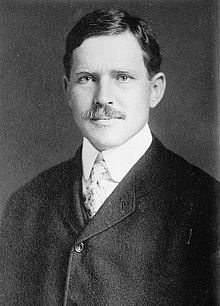
James R. Garfield (1907–1909) - Secretary of the Interior
James Randolph Garfield, the son of President James Abram Garfield, was born in Hiram, Ohio, on October 17, 1865, before moving to the White House.
He attended local schools in Washington, D.C., and graduated from Williams College in 1885. Garfield studied law at Columbia University while practicing in the New York City law office of Bangs and Stetson. He earned admission to the Ohio bar in 1888 and went into practice with his elder brother. Garfield then entered politics, serving in the Ohio State Senate between 1896 and 1899.
He was appointed to sit on the U.S. Civil Service Commission from 1902 to 1903 before becoming commissioner of corporations in the Department of Commerce & Labor in February 1903. President Theodore Roosevelt appointed Garfield secretary of the interior in March 1907, a cabinet post he would hold until the end of the Roosevelt administration. Garfield died at the age of 84 on March 25, 1950.
(Source: Miller Center)
More:
https://en.wikipedia.org/wiki/James_R...
http://cabinet-members.insidegov.com/...
https://www.doi.gov/whoweare/past_sec...
https://garfieldnps.wordpress.com/201...
http://www.sfmuseum.org/hetch/hetchy4...
 by Donald Worster (no photo)
by Donald Worster (no photo) by Lewis L. Gould (no photo)
by Lewis L. Gould (no photo) by David Carle (no photo)
by David Carle (no photo) by John J. Cooper (no photo)
by John J. Cooper (no photo) by
by
 Edmund Morris
Edmund Morris
 Albert J. Beveridge and the First National Child Labor Bill
Albert J. Beveridge and the First National Child Labor Bill
Albert J. Beveridge, in full Albert Jeremiah Beveridge (born Oct. 6, 1862, Highland County, Ohio, U.S.—died April 27, 1927, Indianapolis, Ind.) orator, U.S. senator, and historian.
Beveridge was admitted to the Indiana bar in 1887 and began the practice of law in Indianapolis. He first attracted national attention by his eloquent speeches defending the increasing power of the federal government and advocating U.S. territorial expansion overseas. In 1899 he was elected as a Republican to the U.S. Senate (1899–1911), where he supported the progressive legislation sponsored by President Theodore Roosevelt. Breaking with the conservative wing of his party, he served as chairman and keynote speaker of the emotion-packed convention that organized the Progressive Party and nominated Roosevelt for president in 1912.
Beveridge never again held public office, devoting much time after 1912 to the writing of history. His The Life of John Marshall, 4 vol. (1916–19), was widely acclaimed and won a Pulitzer Prize. At the time of his death he had completed two volumes of a biography of Abraham Lincoln, published in 1928.
(Source: Britannica.com)
Keating-Owen Child Labor Act - An Act of September 1, 1916, Public Law 64-249, 39 STAT 675, to Prevent Interstate Commerce in the Products of Child Labor, and for Other Purposes
This act limited the working hours of children and forbade the interstate sale of goods produced by child labor. It was the first child labor bill, based on Senator Albert J. Beveridge’s proposal from 1906. It used the government’s ability to regulate interstate commerce to regulate child labor. The act banned the sale of products from any factory, shop, or cannery that employed children under the age of 14, from any mine that employed children under the age of 16, and from any facility that had children under the age of 16 work at night or for more than 8 hours during the day. Although the Keating-Owen Act was passed by Congress and signed into law by President Woodrow Wilson, the Supreme Court ruled that it was unconstitutional in 1918 because it overstepped the purpose of the government’s powers to regulate interstate commerce.
(Source: The National Archives)
More:
https://en.wikipedia.org/wiki/Albert_...
https://scholarworks.iu.edu/journals/...
https://scholarworks.iu.edu/journals/...
http://journals.cambridge.org/action/...
http://scholarship.law.berkeley.edu/c...
https://www.ourdocuments.gov/doc.php?...
 by Gerald Mayer (no photo)
by Gerald Mayer (no photo) by Heather Cox Richardson (no photo)
by Heather Cox Richardson (no photo) by Chaim M. Rosenberg (no photo)
by Chaim M. Rosenberg (no photo) by Hugh D. Hindman (no photo)
by Hugh D. Hindman (no photo) by Albert J. Beveridge (no photo)
by Albert J. Beveridge (no photo)
 Tennessee Coal, Iron and Railroad (TCI)
Tennessee Coal, Iron and Railroad (TCI)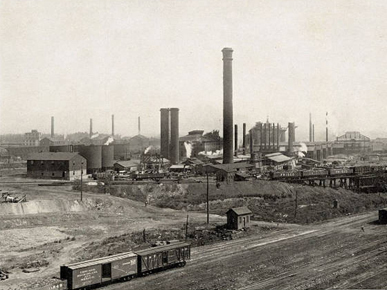
The Tennessee Coal, Iron and Railroad company (TCI), founded in 1852 in Tennessee as the Sewanee Mining Company, became the most significant iron and steel company in Birmingham after entering the area through an 1886 merger. During the financial panic of 1907, TCI became the primary southern subsidiary of the United States Steel Corporation (U.S. Steel), eventually becoming a division of the company and ending its life as a separate entity in the 1950s. Throughout its existence, TCI played a dominant role in the economy of Birmingham and the surrounding area, owning vast acreage of land and coal and iron ore mines and producing iron, steel, tin, and various related products in its Fairfield Works.
After its founding in Tennessee, TCI went through several rounds of financial setbacks and recoveries before, during, and after the Civil War. While under the control of cotton broker John H. Inman and Nathaniel Baxter Jr., a banker whom Inman named president, the company turned its eye toward the burgeoning coal and iron industry in Birmingham. Another Tennessee entrepreneur, Enoch Ensley (who had been rebuffed in his attempt to join TCI in Nashville), purchased the Pratt Coal and Coke Company, to which he added the Alice Furnace Company and the Linn Iron Company. Alfred Shook, who had been connected with TCI, and T. T. Hillman, a Birmingham ironman, bought options on Ensley's holdings and subsequently sold these to TCI. In the largest merger seen to that time in the city, TCI entered the Birmingham district with the transfer of ownership on December 28, 1886. In addition to the Tennessee holdings, TCI now owned 76,000 acres of coal land, 460 coke ovens, two blast furnaces, and 13,000 acres of land that included the Red Mountain iron ore seam. The company moved its headquarters to Birmingham in 1895. Local industrialists hoped to develop steel plants as a local market for the existing pig iron industry. That same year, TCI began producing basic pig iron for northern customers, who converted it to steel, and in 1898 began constructing an open-hearth furnace for manufacturing steel at TCI's Ensley plant. The furnace began operation on Thanksgiving Day, 1899, launching Birmingham as a true competitor in the national iron and steel industry.
During the 1890s and into the early twentieth century, TCI added the DeBardeleben Coal and Iron Company; the Cahaba Coal Mining Company; the Sheffield Coal, Iron and Steel Company; and the Bessemer Rolling Mill Company to its holdings, the latter purchase signaling its entrance into the field of manufacturing finished products in wrought iron and steel. The company, however, continued to suffer from financial problems and frequent upper management changes. Maintenance of company properties suffered during the rapid expansion, and labor problems included a shortage of workers, strikes, and an extremely high turnover rate. Having first used leased convicts in Tennessee, TCI continued to do so in Alabama, supplementing its labor force and hoping to discourage strikes by free workers. Malaria, tuberculosis, polluted water supplies, and inadequate housing added to the instability of the work force. In 1906, however, a short-lived management change put the company on the path to renovating its facilities and improving conditions for workers.
Despite the significant purchase of 160,000 tons of TCI's open-hearth steel rails by railroad magnate E. H. Harriman in 1907, TCI stock was further destabilized by the financial Panic of 1907. The brokerage firm of Moore and Schley held and was liable for a large quantity of TCI stock that had been used as collateral for loans now coming due, so the brokerage was in danger of failing. TCI approached U.S. Steel, founded in 1901 by powerful banker and financier J. P. Morgan, about purchasing the TCI stock with U.S. Steel bonds, rather than cash. If the deal went through, the brokerage firm would be saved, U.S. Steel would gain control of a valuable southern property, and TCI would have access to needed funds.
After seeking assurances from President Theodore Roosevelt that the purchase would not violate the Sherman Anti-Trust Act, company officials concluded the arrangements. Although the purchase was hailed as TCI's savior by local newspapers, historians and local interests continue to debate whether the takeover salvaged TCI and brought needed resources, or if it held back southern economic development by instituting pricing policies, such as "Pittsburgh Plus," that added surcharges to TCI products in an effort to ensure that they did not undercut output from existing northern mills.
Absentee ownership meant that technical developments, expansion plans, pricing, and labor policies would be reviewed and ultimately decided outside of Birmingham. U.S. Steel sent George Gordon Crawford, a Georgia native, to take over as TCI president. He found that the 1907 financial crisis had caused TCI to shut down most of its furnaces, halt expansion plans, and close most mining operations. Backed by U.S. Steel capital and guided by Crawford, TCI weathered the panic and entered a period of unprecedented stability and growth. During his 22-year tenure, Crawford initiated a major improvement or expansion project every year.
In addition to technical challenges, Crawford faced a serious labor crisis. TCI had not renewed the convict lease contract with the state at the end of 1911, so convicts no longer formed a part of the work force. By 1913, the TCI workforce consisted of more than 17,000 employees made up of black southerners (55 percent), native-born whites (37 percent), and immigrants (7 to 8 percent). Turnover was as high as 400 percent annually. Although Crawford followed U.S. Steel's anti-union policy, he also implemented U.S. Steel's program of welfare capitalism. Under this philosophy of labor management, he improved company housing, built planned communities, increased safety measures, and provided recreational activities for workers and their families to attract and retain workers. The company also financed school improvements, including constructing facilities and hiring teachers, to draw more stable, family-oriented workmen. Crawford hired Winifred Collins, a Chicago social worker, to head a social science department that would oversee much of the community-based work.
World War I began a decade of expansion at TCI. In 1917 construction began on the Fairfield Steel Works, which expanded throughout the 1920s. In 1925, TCI began building a special rail line to connect its Red Mountain ore mines with the steel plants at Ensley and Fairfield. In 1926, the Fairfield Sheet Mill was completed. A water-transportation department was established in 1926 to facilitate the shipment of products to Mobile. Although lacking a major river, Birmingham gained a "port"—Birmingport—when improvements to the Warrior-Tombigbee river system and a system of locks allowed for the economical water transport of products to the docks of Mobile. In 1929, the Ensley Land Company, originally established during the presidency of Enoch Ensley, transferred all its property to the Tennessee Land Company, a TCI subsidiary.
During the Great Depression, TCI and its employees suffered along with other Birmingham industries in the hard-hit city. By mid-1932, one-fourth of the city's 100,000 wage and salary earners were unemployed and 60,000 had only part-time work. Although TCI workers remained on the payroll, they received only a few days of work each month, and back rent and debts at the company commissaries mounted. Most of the TCI welfare and community programs were cut back or eliminated. The TCI industrial complex, however, expanded with the completion in 1938 of the Fairfield Tin Mill, which used steel from the TCI furnaces and rolling mills. Approximately 19,000 employees worked for TCI in 1938.
Among President Franklin Roosevelt's New Deal programs, the National Industrial Recovery Act (1933) and the National Labor Relations Act (1935) in particular signaled significant changes for TCI workers. The legislation outlawed unfair practices against unions and guaranteed organized labor the right to bargain collectively. In 1937, U.S. Steel signed an agreement with the Steel Workers Organizing Committee. The United Mine Workers won exclusive bargaining rights for the company's coal miners in 1941. After a long period of tension and violence between the company and between competing unions, the Union of Mine, Mill and Smelter Workers won exclusive bargaining rights for TCI ore miners that same year; however, a 1949 election gave the United Steelworkers of America jurisdiction over the company's ore mines.
War in Europe and the U.S. preparation before World War II brought production at TCI plants back to full production by 1939. The Fairfield Steel Works expanded with new installations and a new blast furnace, and the Ensley plant added a shell-forging facility. Between 1938 and 1941, the TCI workforce increased by 7,000 to a total of approximately 30,000 employees. After the war, consumer demand kept production and employment high, but higher wages, improved transportation, unionization, and post-war suburbs ended the network of employee services established during the Crawford administration. After Lloyd Noland's death in 1949, the company turned the hospital (renamed the Lloyd Noland Hospital), other health facilities, and medical equipment over to the community. A foundation, independent of the company and comprised of business and professional men of western Jefferson County, administered the hospital, which now served not only the TCI employees but also the community at large. Post-war expansion to the industrial complex included additional open-hearth furnaces at the Fairfield Works, the opening of a new coal mine at Concord and improvements at older coal and ore mines, rehabilitation of the Fairfield Sheet Mill for producing cold-reduced sheets, and the introduction of high-grade Venezuelan ore to supplement the local low-grade ore. In the early 1950s, TCI employed more than 28,000 people.
The 1940s and 1950s also saw important corporate changes that marked the end of TCI as a separate corporate entity. In 1945, TCI relinquished its old Tennessee charter and was rechartered by the state of Alabama. U.S. Steel revised its corporate structure in January 1952, and TCI became merely a division of U.S. Steel Corporation. Although the name Tennessee Coal, Iron and Railroad Company no longer existed, the TCI designation continued to be used by many in the Birmingham community. In future years, the Birmingham facilities increasingly became known simply as U.S. Steel.
(Source: Encyclopedia of Alabama)
More:
https://en.wikipedia.org/wiki/Tenness...
http://www.forgottensoutheast.com/loc...
http://www.bhamrails.info/tci/tic_tim...
http://www.miningartifacts.org/Alabam...
http://www.bhamwiki.com/w/Tennessee_C...
 by Ethel Armes (no photo)
by Ethel Armes (no photo) by Henry M. McKiven (no photo)
by Henry M. McKiven (no photo) by Chris Cawood (no photo)
by Chris Cawood (no photo) by
by
 Geoffrey Cowan
Geoffrey Cowan by
by
 Roger Lowenstein
Roger Lowenstein
 Panic of 1907
Panic of 1907
Wall Street during the bank panic in October 1907.
The Panic of 1907 – also known as the 1907 Bankers' Panic or Knickerbocker Crisis – was a United States financial crisis that took place over a three-week period starting in mid-October, when the New York Stock Exchange fell almost 50% from its peak the previous year. Panic occurred, as this was during a time of economic recession, and there were numerous runs on banks and trust companies. The 1907 panic eventually spread throughout the nation when many state and local banks and businesses entered bankruptcy. Primary causes of the run included a retraction of market liquidity by a number of New York City banks and a loss of confidence among depositors, exacerbated by unregulated side bets at bucket shops. The panic was triggered by the failed attempt in October 1907 to corner the market on stock of the >b>United Copper Company. When this bid failed, banks that had lent money to the cornering scheme suffered runs that later spread to affiliated banks and trusts, leading a week later to the downfall of the Knickerbocker Trust Company—New York City's third-largest trust. The collapse of the Knickerbocker spread fear throughout the city's trusts as regional banks withdrew reserves from New York City banks. Panic extended across the nation as vast numbers of people withdrew deposits from their regional banks.
The panic might have deepened if not for the intervention of financier J. P. Morgan, who pledged large sums of his own money, and convinced other New York bankers to do the same, to shore up the banking system. At the time, the United States did not have a central bank to inject liquidity back into the market. By November, the financial contagion had largely ended, only to be replaced by a further crisis. This was due to the heavy borrowing of a large brokerage firm that used the stock of Tennessee Coal, Iron and Railroad Company (TC&I) as collateral. Collapse of TC&I's stock price was averted by an emergency takeover by Morgan's U.S. Steel Corporation—a move approved by anti-monopolist president Theodore Roosevelt. The following year, Senator Nelson W. Aldrich, father-in-law of John D. Rockefeller, Jr., established and chaired a commission to investigate the crisis and propose future solutions, leading to the creation of the Federal Reserve System.
Timeline of panic in New York City
Monday, October 14
Otto Heinze begins purchasing to corner the stock of United Copper.
Wednesday, October 16
Heinze's corner fails spectacularly. Heinze's brokerage house, Gross & Kleeberg is forced to close. This is the date traditionally cited as when the corner failed.
Thursday, October 17
The Exchange suspends Otto Heinze and Company. The State Savings Bank of Butte, Montana, owned by Augustus Heinze announces it is insolvent. Augustus is forced to resign from Mercantile National Bank. Runs begin at Augustus' and his associate Charles W. Morse's banks.
Sunday, October 20
The New York Clearing House forces Augustus and Morse to resign from all their banking interests.
Monday, October 21
Charles T. Barney is forced to resign from the Knickerbocker Trust Company because of his ties to Morse and Heinze. The National Bank of Commerce says it will no longer serve as clearing house.
Tuesday, October 22
A bank run forces the Knickerbocker to suspend operations.
Wednesday, October 23
J.P. Morgan persuades other trust company presidents to provide liquidity to the Trust Company of America, staving off its collapse.
Thursday, October 24
Treasury Secretary George Cortelyou agrees to deposit Federal money in New York banks. Morgan persuades bank presidents to provide $23 million to the New York Stock Exchange to prevent an early closure.
Friday October 25
Crisis is again narrowly averted at the Exchange.
Sunday, October 27
The City of New York tells Morgan associate George Perkins that if they cannot raise $20–30 million by November 1, the city will be insolvent.
Tuesday, October 29
Morgan purchased $30 million in city bonds, discreetly averting bankruptcy for the city.
Saturday, November 2
Moore & Schley, a major brokerage, nears collapse because its loans were backed by the Tennessee Coal, Iron & Railroad Company (TC&I), a stock whose value is uncertain. A proposal is made for U.S. Steel to purchase TC&I.
Sunday, November 3
A plan is finalized for U.S. Steel to take over TC&I.
Monday, November 4
President Theodore Roosevelt approves U.S. Steel's takeover of TC&I, despite anticompetitive concerns.
Tuesday, November 5
Markets are closed for Election Day (no federal elections were actually held this year).
Wednesday, November 6
U.S. Steel completes takeover of TC&I. Markets begin to recover. Destabilizing runs at the trust companies do not begin again.
(Source: Wikipedia)
More:
http://www.u-s-history.com/pages/h952...
http://www.fas.harvard.edu/~histecon/...
http://www.thegoldstandardnow.org/the...
https://www.buyandhold.com/bh/en/educ...
https://eh.net/encyclopedia/the-panic...
http://www.smithsonianmag.com/history...
Wrecking the Nation; The Crime of 1907-8, True Causes of the Panic Stringency of Money and Idleness of Millions of Men by Peter Kinnear (no photo)
 by Robert F. Bruner (no photo)
by Robert F. Bruner (no photo) by Jesse Russell (no photo)
by Jesse Russell (no photo) by Adolph Edwards (no photo)
by Adolph Edwards (no photo) by W. Jett (William Jett) Lauck (no photo)
by W. Jett (William Jett) Lauck (no photo) by James G. Cannon (no photo)
by James G. Cannon (no photo) by Neil Shafer (no photo)
by Neil Shafer (no photo) by Robert Marion La Follette (no photo)
by Robert Marion La Follette (no photo)
 Representative Charles N. Fowler of New Jersey
Representative Charles N. Fowler of New Jersey
Charles Newell Fowler, Sr. (November 2, 1852, Lena, Illinois – May 27, 1932, Orange, New Jersey) was an American Republican Party politician who represented New Jersey's 8th congressional district in the United States House of Representatives from 1895 to 1903, and the 5th district from 1903 to 1911.
Biography
Fowler was born in Lena, Illinois on November 2, 1852. He attended the public schools in Lena and Beloit College. He graduated from Yale College in 1876 where he was a member of Skull and Bones. He then attended the University of Chicago Law School and graduated in 1878. He was admitted to the bar in 1878 and commenced the practice of law in Beloit, Kansas. Fowler moved to Cranford, New Jersey in 1883 and to Elizabeth, New Jersey in 1891 and engaged in banking, serving as president of a mortgage company.
Fowler was elected as a Republican to the Fifty-fourth and to the seven succeeding Congresses, serving in office from March 4, 1895 to March 3, 1911. He was chairman of the Committee on Banking and Currency (Fifty-seventh through Sixtieth Congresses). He was an unsuccessful candidate for nomination for election to the United States Senate in 1910.
Fowler was a member of the Republican State committee from 1898 to 1907. After leaving Congress, he resumed banking activities at Elizabeth. He also engaged in literary pursuits and operated a group of marble quarries in Vermont. In 1930, he moved to Orange, New Jersey, where he died on May 27, 1932. He was interred in Fairview Cemetery in Westfield, New Jersey. (Source: Wikipedia)
More:
http://www.blochrubin.com/uploads/1/1...
https://mises.org/library/origins-fed...
http://bioguide.congress.gov/scripts/...
http://www.ovguide.com/charles-n-fowl...
http://www.findagrave.com/cgi-bin/fg....
(no image) The United States Reserve Bank: The Fundamental Defects of the Federal Reserve System and the Necessary Remedy by Charles N. Fowler (no photo)
(no image) Address of Hon. Charles N. Fowler, of New Jersey, in the House of representatives, Wednesday, March 31, 1897 .. by Charles N. Fowler (no photo)
(no image)The National Issues of 1916 by Charles N. Fowler (no photo)
 by Charles N. Fowler (no photo)
by Charles N. Fowler (no photo) by Charles N. Fowler (no photo)
by Charles N. Fowler (no photo)
 James B. Reynolds
James B. Reynolds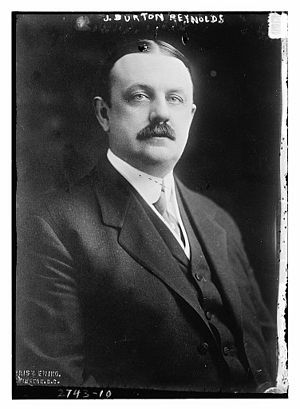
James Burton Reynolds (1870 – February 8, 1948) was Assistant Secretary of the Treasury, where he was accused of taking bribes from the Sugar Trust.
Biography
He was born in Saratoga, New York. He married Irene H. Holeombe (c.1880-1943) In 1913 he was Secretary of the Republican National Committee. In 1920 he was the campaign manager for Calvin Coolidge. He died in February 1948. (Source: Wikipedia)
More:
http://query.nytimes.com/gst/abstract...
https://books.google.com/books?id=WUM...
http://query.nytimes.com/gst/abstract...
http://content.time.com/time/magazine...
http://www.chapmanmuseum.org/TheCorne...
 by Robert F. Bruner (no photo)
by Robert F. Bruner (no photo) by David Pietrusza (no photo)
by David Pietrusza (no photo) by Donald A. Ritchie (no photo)
by Donald A. Ritchie (no photo) by Paul Wolman (no photo)
by Paul Wolman (no photo) by
by
 Amity Shlaes
Amity Shlaes
 Senator Joseph Foraker of Ohio
Senator Joseph Foraker of Ohio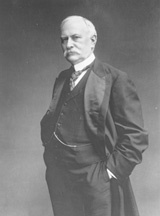
Joseph Benson Foraker (July 5, 1846 – May 10, 1917) was the 37th Governor of Ohio from 1886 to 1890 and a Republican United States Senator from 1897 until 1909.
Foraker was born in rural Ohio in 1846, and enlisted at age 16 in the Union Army during the American Civil War. He fought for almost three years, attaining the rank of captain. After the war, he was a member of Cornell University's first graduating class, and became a lawyer. Interesting himself in politics, he was elected a judge in 1879 and became well known as a political speaker. He was defeated in his first run for governor in 1883, but was elected two years later. As governor, he built an alliance with Cleveland industrialist Mark Hanna, but fell out with him in 1888. Foraker was defeated for re-election in 1889, but was elected United States Senator by the Ohio General Assembly in 1896, after an unsuccessful bid for that office in 1892.
In the Senate, he supported the Spanish–American War and the annexation of the Philippines and Puerto Rico; the Foraker Act gave Puerto Rico its first civil government under American rule. He came to differ with President Theodore Roosevelt over railroad regulation and political patronage. Their largest disagreement was over the Brownsville Affair, in which black soldiers were accused of terrorizing a Texas town, and Roosevelt dismissed the entire battalion. Foraker zealously opposed Roosevelt's actions as unfair, and fought for the soldiers' reinstatement. The two men's disagreement broke out into an angry confrontation at the 1907 Gridiron Dinner, after which Roosevelt worked to defeat Foraker's re-election bid. Foraker died in 1917; in 1972, the Army reversed the dismissals and cleared the soldiers.
Boyhood and Civil War
The house in which Joseph Foraker was born was a comfortable two-story residence; his later campaign publications often depicted it as a log cabin. When Joseph was age 2, David Reece died, and the Foraker family purchased the mill and adjacent farm. There, Joseph grew up as a typical farm boy. He received little formal education, attending the local school for three or four months each winter. Nevertheless, young Joseph acquired a taste for military history, and a gift for speaking. He also became interested in politics; at age 10, he became an adherent of the newly formed Republican Party. Four years later, he supported the Republican candidate, former Illinois representative Abraham Lincoln, in the 1860 presidential race, marching in processions of the Wide Awakes and other pro-Lincoln groups, and attending as many rallies as he could. Impressed enough by one speaker to follow him to a neighboring town, he learned not to make the same speech twice in two days—at least, not in venues close to each other.
On July 14, 1862, Foraker was mustered in Company "A", 89th Ohio Volunteer Infantry; in late August, after training, he became second sergeant. With Confederate forces moving through Kentucky and threatening Cincinnati, the 89th was hurried into defenses set up across the Ohio River in Newport, Kentucky. The Confederates did not reach the Ohio, having been forced back well to the south, and the 89th moved to Fort Shaler, near Newport. While Foraker was at Fort Shaler, President Lincoln issued the Emancipation Proclamation; Foraker recounted in his memoirs that he and his comrades felt that the proclamation meant that they were fighting for the end of slavery, not just to preserve the Union.
Later in September 1862, the 89th was sent to Western Virginia (today West Virginia) to reinforce Union forces there, and joined in their advance for a month. The regiment settled into winter quarters, but was called out for transport to Tennessee, where it helped relieve Fort Donelson in February 1863. Before this action, Foraker had seen little fighting, and the bloody scenes there were a shock to him; he wrote his parents, "To know how dreadful war is you must see it yourself." The 89th remained at Donelson only a few days before being sent to join the Army of the Cumberland under the command of Major General William Rosecrans near Carthage; there, Foraker was promoted to second lieutenant. In June, Foraker led an advance guard that clashed with the Confederate rear in what developed into the Battle of Hoover's Gap, and the Union forces slowly advanced across Tennessee, reaching Chattanooga in September. From Chattanooga, Foraker and two other officers were sent home to collect new soldiers who were expected to be drafted, but the plan to draft recruits was abandoned due to political opposition. In November he returned to Chattanooga, where the 89th was now part of the Army of the Tennessee under Brigadier General William Tecumseh Sherman, in time to fight in the Battle of Missionary Ridge.
Governor of Ohio (1886–1890)
Joseph Foraker was sworn in as governor on January 12, 1886, during an intense blizzard that prevented many of the political marching clubs hoping to honor him from reaching Columbus. In his inaugural address, he urged election reform, creation of a liquor licensing bureau, the abolition of laws that discriminated against blacks, and the establishment of a state board of health. With a Republican majority in both houses, the legislature enacted many of his proposals, including the Poorman Law, requiring voter registration in Cleveland and Cincinnati (and later in all large cities), as well as the Pugsley Law, which established nonpartisan boards to appoint election officials. The Ohio State Journal commented, "Not all that is needed in the way of amendments to the election laws of Ohio, but it will do for a starter." The Dow Law imposed an annual tax on businesses in the alcohol trade; most of the proceeds would go for poor relief and to the police fund. With Foraker's support, the remaining laws that allowed racial discrimination in Ohio were repealed.
Foraker became popular during his governorship for "waving the bloody shirt", that is, castigating the South for the Civil War. President Cleveland in 1887 requested northern governors to return captured Confederate battle flags. When Foraker was asked by a supporter if he would allow the banners to go South, he responded by telegraph, "No rebel flags will be returned while I am governor." Cleveland backed down, and Foraker was hailed as a hero by many, receiving thousands of congratulatory messages. Foraker criticized the President for vetoing a bill increasing war pensions and for going fishing on Decoration Day. When the governor visited Philadelphia later that year for the centennial of the Constitution, he rode at the head of a regiment of Ohio militia past the reviewing stand on which Cleveland stood. When Foraker saluted, Cleveland removed his hat, but did not bow slightly as he had for other state governors. Later that day, Foraker led a troop of Grand Army of the Republic veterans past Cleveland's reviewing stand in another parade, bearing an array of captured battle flags.
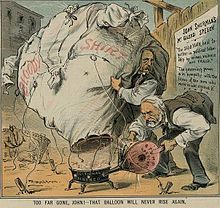
An 1885 political cartoon accuses Sherman (right) and Foraker of "waving the bloody shirt" of the Civil War for political gain.
Senator (1897–1909)
On March 4, 1897, the same day William McKinley became president, Joseph Foraker was sworn in as senator from Ohio. The new legislator was escorted to the bar of the Senate by Sherman; his swearing-in helped cement a modest Republican majority. Foraker continued his private legal work, which was not unusual at the time as many senators maintained business interests. Wealthy through his law practice, Foraker did not stand out in that regard either, as the "rich man's club" of the Senate of that era contained about 25 millionaires.
During the 1896 campaign, Hanna served as chairman of the Republican National Committee, in charge of McKinley's campaign, and obtained millions for his presidential candidate by soliciting donations from wealthy businessmen.[90] After the November election, Foraker met with Hanna and was surprised to learn that President-elect McKinley and Hanna planned that Sherman would be appointed Secretary of State and that the industrialist would take Sherman's place in the Senate. Foraker objected to both components of this plan, feeling that Hanna was not qualified as a legislator, and that Sherman, whose faculties were starting to fail, should not become Secretary of State. Foraker met with McKinley, but failed to convince him.
It was not until February 21 that Bushnell finally announced Hanna's appointment, effective upon Sherman's resignation. This controversy to some extent overshadowed Foraker's swearing-in as senator on March 4—Hanna adherents claimed that Bushnell had delayed the effective date of the industrialist's appointment until Foraker took his seat so that Hanna would be the junior senator. In his memoirs, Foraker denied this, noting that Sherman was unwilling to resign until the afternoon of March 4, after the new president and Congress were sworn in and the new Cabinet, including Sherman, was confirmed by the Senate. Hanna was given his commission as senator by Bushnell on the morning of March 5.
After President McKinley was assassinated in September 1901, Foraker attended the funeral services and addressed a large memorial meeting at the Cincinnati Music Hall. When politics resumed after the mourning, Foraker spoke in defense of President Roosevelt's inviting Booker T. Washington, a black man, to the White House. This helped ensure support from the black community in Foraker's successful re-election bid in January 1902, which was not opposed by the Hanna faction.
Foraker supported President Wilson as he moved the nation closer to intervention in World War I. In April 1917, Foraker was one of a group of Cincinnatians who organized to support Wilson when the President asked Congress to declare war on Germany. The former senator's ill-health (he had suffered several heart attacks during the preceding winter) limited his participation. On May 7, Foraker experienced another heart attack in downtown Cincinnati. Taken home, he lapsed in and out of consciousness for three days before dying on May 10, 1917. (Source: Wikipedia)
More:
http://bioguide.congress.gov/scripts/...
http://www.ohiohistorycentral.org/w/J...
http://www.findagrave.com/cgi-bin/fg....
http://www.ourcampaigns.com/Candidate...
http://www.presidentprofiles.com/Gran...
 by Robert McMurdy (no photo)
by Robert McMurdy (no photo) by George Mathews (no photo)
by George Mathews (no photo) by Joseph Benson Foraker (no photo)
by Joseph Benson Foraker (no photo) by
by
 Doris Kearns Goodwin
Doris Kearns Goodwin by
by
 Edmund Morris
Edmund Morris
 National Monetary Commission
National Monetary Commission
National Monetary Commission, a commission established by the Aldrich-Vreeland Act of 30 May 1908 to "inquire into and report to Congress … what changes are necessary or desirable in the monetary system of the United States or in the laws relating to banking and currency."
The commission, composed of nine members of the Senate and nine members of the House of Representatives, with Senator Nelson Aldrich as chairman, was duly appointed and proceeded to carry out its designated task. It appointed experts to make studies of banking history and existing conditions in the United States and other countries, and in the summer of 1908 members of the commission visited England, France, and Germany to ascertain their banking arrangements, methods, and practices by personal observation and interviews.
On 8 January 1912 the commission submitted its report to Congress. The report contained a summary of the work done by the commission, and by experts and others employed by it, as well as a description and text of a proposed law to remedy a number of existing defects as enumerated in the report. The proposed law contained provisions for the establishment of a National Reserve Association with branches to act as a central bank for the United States. The monographs and articles, prepared for the commission by experts and published in conjunction with the report, numbered more than forty and constituted, at the time, one of the most comprehensive banking libraries available. (Source: Encyclopedia.com)
More:
https://en.wikipedia.org/wiki/Nationa...
https://fraser.stlouisfed.org/series/...
http://www.federalreservehistory.org/...
http://onlinebooks.library.upenn.edu/...
https://archive.org/details/cu3192407...
http://www.jstor.org/stable/1991235?s...
http://www.jstor.org/stable/2635441?s...
http://www.alt-m.org/2015/08/27/fed-o...
http://papers.ssrn.com/sol3/papers.cf...
(no image)American Monetary System by Robert A. Degen (no photo)
(no image)Nelson W. Aldrich, A Leader In American Politics by Nathaniel W. Stephenson (no photo)
 by J. Lawrence Broz (no photo)
by J. Lawrence Broz (no photo) by Allan H. Meltzer (no photo)
by Allan H. Meltzer (no photo) by Donald R. Wells (no photo)
by Donald R. Wells (no photo) by Elmus Wicker (no photo)
by Elmus Wicker (no photo) by John H. Wood (no photo)
by John H. Wood (no photo)
 Edward Butterfield Vreeland
Edward Butterfield Vreeland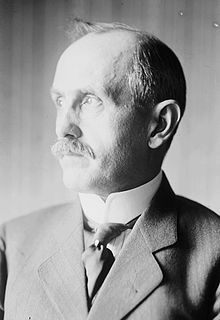
Edward Butterfield Vreeland (December 7, 1856 – May 8, 1936) was a United States Representative from New York. Born in Cuba, Allegany County, New York, he graduated from Friendship Academy in 1877. In 1869 he moved to Salamanca and was superintendent of the public schools there from 1877 to 1882. He studied law and was admitted to the bar in 1881, but did not engage in active practice. He engaged in banking and in the oil and insurance business and became president of the Salamanca Trust Co. in 1891; from 1889 to 1893 he served as postmaster of Salamanca.
Vreeland was elected as a Republican to the Fifty-sixth Congress to fill the vacancy caused by the resignation of Warren B. Hooker. He was reelected to the Fifty-seventh and to the five succeeding Congresses and held office from November 7, 1899 to March 3, 1913. While in the House, he was chairman of the Committee on Banking and Currency (Sixty-first Congress). He declined to be a candidate for renomination in 1912, and was appointed a member of the National Monetary Commission, serving as vice chairman from 1909 to 1912. He resumed former business pursuits in Salamanca until January 1, 1936, when he retired from active business. He died in Salamanca; interment was in Wildwood Cemetery. (Source: Wikipedia)
More:
https://www.govtrack.us/congress/memb...
http://history.house.gov/People/Detai...
http://members-of-congress.insidegov....
http://query.nytimes.com/gst/abstract...
http://www.c-span.org/person/?edwardv...
http://america.pink/edward-vreeland_1...
http://bioguide.congress.gov/scripts/...
 by Kenneth C. Martis (no photo)
by Kenneth C. Martis (no photo) by R. W. Hafer (no photo)
by R. W. Hafer (no photo) by Richard T. McCulley (no photo)
by Richard T. McCulley (no photo) by Daniel Leab (no photo)
by Daniel Leab (no photo) by Richard H. Timberlake Jr. (no photo)
by Richard H. Timberlake Jr. (no photo) by
by
 Milton Friedman
Milton Friedman
 Charles Allen Culberson
Charles Allen Culberson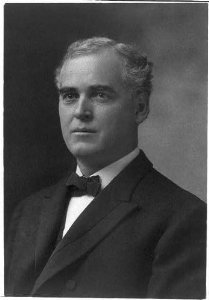
CULBERSON, Charles Allen, (son of David Browning Culberson), a Senator from Texas; born in Dadeville, Tallapoosa County, Ala., June 10, 1855; moved to Texas with his parents, who settled first in Gilmer and later in Jefferson; attended the common schools and graduated from the Virginia Military Institute at Lexington in 1874; studied law at the University of Virginia at Charlottesville in 1876 and 1877; admitted to the bar in 1877 and commenced practice in Jefferson, Tex.; moved to Dallas, Tex., in 1887; attorney general of Texas 1890-1894; Governor of Texas 1894-1898; elected as a Democrat to the United States Senate January 25, 1899; reelected in 1905, 1911, and again in 1916, and served from March 4, 1899, to March 3, 1923; unsuccessful candidate for reelection in 1922; Democratic caucus chairman 1907-1909; chairman, Committee on Additional Accommodations for the Library (Sixty-first Congress), Committee on Public Health and National Quarantine (Sixty-second Congress), Committee on Judiciary (Sixty-third through Sixty-fifth Congresses), Committee on Private Land Claims (Sixty-sixth Congress); lived in retirement until his death in Washington, D.C. March 19, 1925; interment in East Oakwood Cemetery, Fort Worth, Tex.
(Source: Biographical Directory of the United States Congress)
More:
https://en.wikipedia.org/wiki/Charles...
http://www.lib.utexas.edu/taro/tslac/...
https://texaspolitics.utexas.edu/arch...
http://www.nga.org/cms/home/governors...
https://tshaonline.org/handbook/onlin...
http://scholarworks.sfasu.edu/cgi/vie...
 by Meg Frisbee (no photo)
by Meg Frisbee (no photo) by Lewis L. Gould (no photo)
by Lewis L. Gould (no photo) by Edward Mandell House (no photo)
by Edward Mandell House (no photo) by John W. Raimo (no photo)
by John W. Raimo (no photo) by Leonard C. Schlup (no photo)
by Leonard C. Schlup (no photo) by Congressional Quarterly (no photo)
by Congressional Quarterly (no photo)
 Senator Jefferson Davis
Senator Jefferson Davis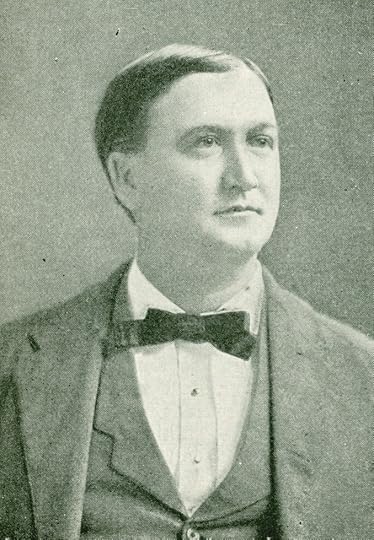
Jefferson Davis (May 6, 1862 – January 3, 1913), commonly known as Jeff Davis, was a Democratic politician who served as the 20th Governor of Arkansas from 1901 to 1907 and in the United States Senate from 1907 to 1913. He took office as one of Arkansas's first New South governors and proved to be one of the state's most polarizing figures. Davis utilized his silver tongue and ability to demagogue to exploit existing feelings of agrarian frustration among poor rural whites and thus build a large populist appeal. However, since Davis often blamed city-dwellers, blacks and Yankees for problems on the farm, the state was quickly and ardently split into "pro-Davis" or "anti-Davis" factions.
Davis began his political career as Arkansas Attorney General, where he immediately began making political waves. His office challenged the legality of the Kimball State House Act and made an extremely controversial extraterritorial interpretation of the Rector Antitrust Act. His fight to prevent trusts from doing business in Arkansas and the extreme lengths he went to enforce his opinion would be a common theme throughout his political career and provided him with credibility among the poor rural whites that would become his base.
Davis' three two-year terms as Arkansas Governor "produced more politics than government", but succeeded in building a new state house and reforming the penal system. An almost-constant series of scandals and outrageous behavior characterized his time in office, which followed him when he won election to the United States Senate in 1906. Davis is often put in the same class as Benjamin Tillman, Robert Love Taylor, Thomas E. Watson, James K. Vardaman, Coleman Livingston Blease, and later Huey Long, controversial figures known as part-Southern demagogues, part-populists and part-political bosses.
Davis was well known for his outrageous rhetoric and oratorial skills. He made a career of skewering the business interests, newspapers, and urban dwellers in order to appeal to the poor rural citizens of the state. He portrayed himself as just another poor country boy against the moneyed interests that held back the common man. Davis was equally able to wield humor, the "bloody shirt", and racial differences. It was also said that many of his supporters incorrectly believed he was of familial relation to the Jefferson Davis who was the President of the Confederacy, a belief that Davis did nothing to discourage, and which he may have covertly encouraged.[8]
Davis was an avowed racist and segregationist. In 1905, when President Theodore Roosevelt visited Arkansas, Davis greeted him with a speech in defense of the practice of lynching. Roosevelt responded with a calmer speech in defense of the rule of law.
Davis served in the United States Senate until his death. He is buried at historic Mount Holly Cemetery in Little Rock, Arkansas.
(Source: Wikipedia)
More:
http://www.nga.org/cms/home/governors...
http://www.encyclopediaofarkansas.net...
https://www.geni.com/people/Jefferson...
http://www.sos.arkansas.gov/education...
http://query.nytimes.com/gst/abstract...
http://www.worldlibrary.org/article/W...
http://web.archive.org/web/2007100608...
http://web.archive.org/web/2008051111...
http://chroniclingamerica.loc.gov/lcc...
http://bioguide.congress.gov/scripts/...
http://www.jstor.org/stable/40023902?...
http://www.jstor.org/stable/40024652?...
http://www.jstor.org/stable/40026625?...
(no image)Arkansas Democratic Politics, 1896 1920 by Richard Niswonger (no photo)
 by Congress (U.S.), Joint Committee on Printing (no photo)
by Congress (U.S.), Joint Committee on Printing (no photo) by John W. Raimo (no photo)
by John W. Raimo (no photo) by Raymond Arsenault (no photo)
by Raymond Arsenault (no photo) by Timothy Paul Donovan (no photo)
by Timothy Paul Donovan (no photo) by The S. J. Clarke publishing company (no photo)
by The S. J. Clarke publishing company (no photo) by Jo Anne McCormick Quatannens (no photo)
by Jo Anne McCormick Quatannens (no photo) by William Lindsey (no photo)
by William Lindsey (no photo)
 Governor Charles Evan Hughes
Governor Charles Evan Hughes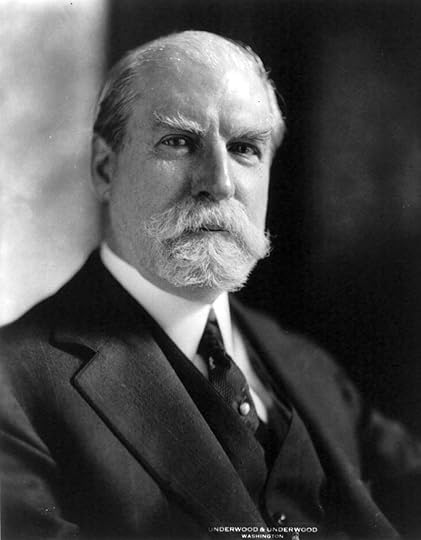
Charles Evans Hughes (1862–1948)
Known as a master of building consensus, the two-time Supreme Court justice Charles Evans Hughes was lauded for his brilliant legal mind. As chief justice from 1930 to 1941, he is credited with maintaining the Supreme Court's ability to function as an independent, coequal branch of government, and for balancing the progressive forces unleashed by the Depression against the conservative forces that sought to confine regulation to a narrow sphere. A prolific and talented writer, he penned twice as many opinions as any of his contemporaries on the Supreme Court. Hughes was elected governor of New York in 1906 and appointed as an associate justice of the U.S. Supreme Court in 1910. He resigned from the bench in 1916 to run for president and returned to private law practice after losing one of the closest elections in American history to Woodrow Wilson. Appointed secretary of state by President Warren Harding in 1921, he later served as a judge of the Permanent Court of Arbitration and the Permanent Court of International Justice before President Herbert Hoover appointed him chief justice of the United States in 1930. In that post, he wrote the opinions in key cases concerning the New Deal, such as West Coast Hotel v. Parris, National Labor Relations Board v. Jones & Laughlin Steel Corporation, and Schecter Poultry Corp. v. United States. In 1937, he opposed Roosevelt's court reorganization plan, which, opponents labeled as "court-packing."
Graduating at the top of his law school class in 1884, Hughes was selected as a Prize Fellow, which allowed him to stay on at the law school (for 500 dollars a year) to tutor and conduct quizzes for law students. He did this from 1884 to 1887 while also maintaining a private practice. After his death, the law school endowed the Charles Evans Hughes Professorship. Currently, second-year law students can be awarded Charles Evans Hughes Fellowships. On April 11, 1962, the centenary of Hughes's birth, a bust of the late Columbian was presented to the School by his son-in-law, William T. Gossett (Law 1928).
(Source: Columbia University)
More:
http://www.britannica.com/biography/C...
https://en.wikipedia.org/wiki/Charles...
http://www.history.com/topics/charles...
https://history.state.gov/departmenth...
http://www.biography.com/people/charl...
http://www.encyclopedia.com/topic/Cha...
http://www.u-s-history.com/pages/h134...
http://www.pbs.org/wnet/supremecourt/...
http://www.conservapedia.com/Charles_...
http://web.archive.org/web/2012030915...
(no image)The Autobiographical Notes of Charles Evans Hughes by Charles Evans Hughes (no photo)
(no image)Roger Williams; The Pioneer Of Religious Liberty by Charles Evans Hughes (no photo)
(no image)Addresses of Charles Evans Hughes, 1906-1916; With an Introduction by Charles Evans Hughes (no photo)
 by Charles Evans Hughes (no photo)
by Charles Evans Hughes (no photo) by William G. Ross (no photo)
by William G. Ross (no photo) by Robert Wesser (no photo)
by Robert Wesser (no photo) by Dexter Perkins (no photo)
by Dexter Perkins (no photo) by John Palmer Gavit (no photo)
by John Palmer Gavit (no photo) by Charles Evans Hughes (no photo)
by Charles Evans Hughes (no photo) by Henry J. Abraham (no photo)
by Henry J. Abraham (no photo) by Clare Cushman (no photo)
by Clare Cushman (no photo) by
by
 Benjamin Wittes
Benjamin Wittes
 Federal Employers Liability Act - 1908 - FELA Law
Federal Employers Liability Act - 1908 - FELA Law
Fatal car accident in Spencerport, New York, October 20, 1917
A federal statute that provides for a liberalization of the rules for determining tort liability applicable to the liability of railroads to their employees for personal injury (PI). Under normal tort rules, the injured party must prove negligence on the part of the defendant and the absence of contributory negligence or assumption of risk on his or her own part. Under FELA, the employee need only show that any negligence on the part of the employer contributed to the injury. However, contributory negligence on the part of the employee reduces the recovery in proportion to the negligence attributable to the employee. The practical effect of this law, as interpreted over the years by the courts, has virtually been to impose a strict liability law on railroads with respect to injury to their employees in a manner very similar to workers compensation but without the limitation on benefits provided under the workers compensation laws.
(Source: International Risk Management Institute)
More:
https://en.wikipedia.org/wiki/Federal...
https://www.hg.org/fela-federal-emplo...
http://www.encyclopedia.com/doc/1G2-3...
http://injury.findlaw.com/workers-com...
http://www.marshallfriedman.com/artic...
http://www.ble-t.org/fela/
http://www.yjblaw.com/yjb-library/fel...
http://chestofbooks.com/society/law/T...
http://chestofbooks.com/society/law/T...
http://www.dsq-sds.org/article/view/1...
http://www.railroadinjurylawyers.org/...
(no image)Unconstitutionality of the Federal Employers Liability ACT by Connecticut Supreme Court of Errors (no photo)
(no image)Compensating Injured Railroad Workers Under the Federal Employer's Liability ACT: Special Report 241 by National Research Council (no photo)
(no image)Compilation Of Laws Relating To Railroad Retirement, Unemployment, And Labor: Railroad Retirement Act Of 1974, Railroad Unemployment Insurance Act, Railway Labor Act, Federal Employer's Liability Act, Labor Dispute Resolutions by The United States of America (no photo)
 by John A Walgren (no photo)
by John A Walgren (no photo) by William Lloyd Prosser (no photo)
by William Lloyd Prosser (no photo) by Lawrence M. Friedman (no photo)
by Lawrence M. Friedman (no photo) by Leonard W. Levy (no photo)
by Leonard W. Levy (no photo) by William G. Thomas (no photo)
by William G. Thomas (no photo) by John Fabian Witt (no photo)
by John Fabian Witt (no photo)
 Senator Eugene Hale
Senator Eugene Hale
Eugene Hale (June 9, 1836 – October 27, 1918) was a Republican United States Senator from Maine.
Born in Turner, Maine, he was educated in local schools and at Maine's Hebron Academy. He was admitted to the bar in 1857 and served for nine years as prosecuting attorney for Hancock County, Maine. He was elected to the Maine Legislature 1867–68, to the U.S. House of Representatives 1869–79, serving in the 41st and four succeeding Congresses. He was an unsuccessful candidate for reelection in 1878 to the 46th Congress.
He was elected to succeed Hannibal Hamlin in the U.S. Senate in 1881; reelected in 1887, 1893, 1899 and 1905 and served from March 4, 1881, to March 3, 1911. During his time in the Senate, he served several committees, chairing, during various Congreses, the U.S. Senate Committee on the Census, the U.S. Senate Committee on Private Land Claims, the U.S. Senate Committee on Printing, the U.S. Senate Committee on Naval Affairs, the U.S. Senate Committee on Appropriations and the U.S. Senate Committee on Public Expenditures. He was Republican Conference Chairman from 1908 to 1911.
Although he declined the post of United States Secretary of the Navy in the Rutherford B. Hayes administration (and had previously declined a Cabinet appointment under Ulysses S. Grant), Senator Hale performed constructive work of the greatest importance in the area of naval appropriations, especially during the early fights for the "new Navy." "I hope", he said in 1884, "that I shall not live many years before I shall see the American Navy what it ought to be, the pet of the American people." Much later in his career, he opposed the building of large numbers of capital ships, which he regarded as less effective in proportion to cost and subject to rapid obsolescence.
He was served as a member of the National Monetary Commission. Hale received an LL.D. from Bates College in 1882.
During the late 1890s, Hale and Senator George F. Hoar of Massachusetts were the most vocal opponents of American intervention into the ongoing insurrection in Cuba. Hale disdained expansionism and jingoism and often challenged claims made by senators on Cuban military victories and Spanish atrocities. He so frequently engaged in verbal jousts with Cuban sympathizers in the Senate that they unfairly accused him of parroting Spanish propaganda and called him "The Senator from Spain."
Senator Hale retired from politics in 1911 and spent the remainder of his life in Ellsworth, Maine, and in Washington, D.C., where he died. He is buried at in Woodbine Cemetery, Ellsworth, Maine.
Two ships were named USS Hale for him. He was the father of Frederick Hale, also a U.S. Senator from Maine, and of diplomat Chandler Hale.
Gertrude Atherton's novel Senator North (1900) was based on Eugene Hale. (Source: Wikipedia)
More:
https://www.govtrack.us/congress/memb...
http://www.onlinebiographies.info/me/...
http://maineanencyclopedia.com/hale-e...
http://www.loc.gov/pictures/item/brh2...
http://www.loc.gov/pictures/item/brh2...
http://bioguide.congress.gov/scripts/...
http://www.metmuseum.org/art/collecti...
https://www.mainememory.net/artifact/...
(no image)The Genealogy of the Descendants of Henry Kingsbury, of Ipswich and Haverhill, Mass by Frederick John Kingsbury (no photo)
(no image)Panama Canal Appropriations and Participation in the Morocco Conference and in European International Complications: Speeches of Hon. Eugene Hale, of Maine, in the United States Senate, December 15 and 16, 1905, and January 15, 1906 by Eugene Hale (no photo)
(no image)Statement of Benjamin H. Mace, on soldiers' claims, and the action of Eugene Hale, M. C., in relation thereto by Benjamin H. Mace (no photo)
 by
by
 Joshua Lawrence Chamberlain
Joshua Lawrence Chamberlain by Kenneth C. Martis (no photo)
by Kenneth C. Martis (no photo) by
by
 Gertrude Atherton
Gertrude Atherton
 Filibustering and Filibuster of 1908 by LaFollette
Filibustering and Filibuster of 1908 by LaFollette
A filibuster in the United States Senate is a dilatory or obstructive tactic used in the United States Senate to prevent a measure from being brought to a vote. The most common form of filibuster occurs when a senator attempts to delay or entirely prevent a vote on a bill by extending the debate on the measure, but other dilatory tactics exist. The rules permit a senator, or a series of senators, to speak for as long as they wish and on any topic they choose, unless "three-fifths of the Senators duly chosen and sworn" (usually 60 out of 100 senators) brings debate to a close by invoking cloture under Senate Rule XXII. (Source: Wikipedia)
La Follette
The fourth longest filibuster in American political history was conducted by U.S. Sen. Robert La Follette Sr. of Wisconsin, who spoke for 18 hours and 23 minutes to stall debate in 1908.
Senate archives described La Follette as a "fiery progressive senator," a "stem-winding orator and champion of family farmers and the laboring poor."
The fourth longest filibuster halted debate on the Aldrich-Vreeland currency bill, which permitted the U.S. Treasury to lend currency to banks during fiscal crises, according to Senate records.
According to the Supreme Court ruling in United States v. Ballin (1892), changes to Senate rules could be achieved by a simple majority. Nevertheless, under current Senate rules, a rule change itself could be filibustered, with the votes of two-thirds of those senators present and voting (as opposed to the normal three-fifths of those sworn) needed to end debate. Despite this written requirement, the possibility exists that the Senate's presiding officer could on motion declare a Senate rule unconstitutional, which decision can be upheld by a simple majority vote of the Senate. (Source: About.com)
More:
http://www.nytimes.com/1993/06/06/opi...
https://www.nolabels.org/blog/the-5-m...
http://vanwinkles.com/10-longest-fili...
http://wivb.com/2015/05/21/the-5-long...
https://library.cqpress.com/cqalmanac...
http://mentalfloss.com/article/49360/...
http://scholarship.law.duke.edu/cgi/v...
http://balkin.blogspot.hr/2009/12/his...
http://www.brookings.edu/research/tes...
http://www.senate.gov/pagelayout/hist...
(no image)The Story of the Filibusters by
 James Jeffrey Roche
James Jeffrey Roche by Gregory J. Wawro (no photo)
by Gregory J. Wawro (no photo) by Nancy C. Unger (no photo)
by Nancy C. Unger (no photo) by Halford Ross Ryan (no photo)
by Halford Ross Ryan (no photo) by Gregory Koger (no photo)
by Gregory Koger (no photo) by Richard A. Arenberg (no photo)
by Richard A. Arenberg (no photo)
 Breaker Boys
Breaker Boys
The use of breaker boys began in the mid-1860s. 'Breaker boys' were young boys, usually between the ages of 8 and 12 years old, employed in breaking stage of coal mining, breaking mined coal into relatively uniform sized pieces by hand and separating out impurities such as rock, slate, sulphur, clay and soil. While increasing public pressure in the late 19th century led to a series of reforms regulating the minimum age of boys hired as breakers, enforcement was lax at best. Yet breaker boys were far from passive figures in the often tumultuous and sometimes violent world of late 19th and early 20th century mining. They were known for precocious labor militancy and a rejection of adult authority.
Life in the Mines
The work performed by breaker boys was hazardous. Breaker boys were forced to work without gloves so that they could better handle the slick coal. The dust was so dense at times, in the mine, as to obscure the view. This dust penetrates the utmost recesses of the boy's lungs. A kind of slave driver sometimes stands over the boys, prodding or kicking them into obedience.
Public Outcry
Public condemnation of the use of breaker boys was so widespread that in 1885 Pennsylvania enacted a law forbidding the employment of anyone under the age of 12 from working in a coal breaker, but the law was poorly enforced; many employers forged proof-of-age documentation, and many families forged birth certificates or other documents so their children could support the family. Estimates of the number of breaker boys at work in the anthracite coal fields of Pennsylvania vary widely, and official statistics are generally considered by historians to undercount the numbers significantly. One estimate had 20,000 breaker boys working in the state in 1880, 18,000 working in 1900, 13,133 working in 1902, and 24,000 working in 1907. Technological innovations in the 1890s and 1900s (such as mechanical and water separators designed to remove impurities from coal) dramatically lowered the need for breaker boys, but adoption of the new technology was slow.
By the 1910s, the use of breaker boys was dropping because of improvements in technology, stricter child labor laws, and the enactment of compulsory education laws. The practice of employing children in coal breakers largely ended by 1920 because of the efforts of the National Child Labor Committee, sociologist and photographer Lewis Hine, and the National Consumers League, all of whom educated the public about the practice and succeeded in obtaining passage of national child labor laws.
(Source: Talking Points Memo and Wikipedia)
More:
http://historymatters.gmu.edu/d/5571/
http://www.pbs.org/wgbh/amex/1900/fil...
http://www.eyewitnesstohistory.com/hn...
http://arlweb.msha.gov/CENTURY/LITTLE...
https://ehistory.osu.edu/exhibitions/...
 by Michael Burgan (no photo)
by Michael Burgan (no photo) by Ian Millhiser (no photo)
by Ian Millhiser (no photo) by
by
 Susan Campbell Bartoletti
Susan Campbell Bartoletti by
by
 Alexander Nemerov
Alexander Nemerov by
by
 Russell Freedman
Russell Freedman
 John Sharp Williams
John Sharp Williams 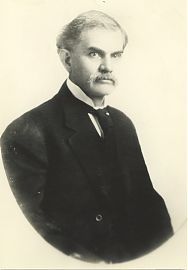
John Sharp was the grandson of Christopher Harris Williams a Representative and a Senator from Mississippi . He was born in Memphis, Tenn on July 30, 1854. After the death of his parents he moved to Yazoo County, Mississippi and attended private schools, including the Kentucky Military Institute near Frankfort, the University of the South, Sewanee, Tenn., the University of Virginia at Charlottesville, and the University of Heidelberg, at Baden, Germany.
He subsequently studied law at the University of Virginia and in Memphis, Tennessee and was admitted to the bar in 1877. He moved to Yazoo City, Mississippi in 1878 and engaged in the practice of law and was also interested in cotton planting.
He was elected as a Democrat to the Fifty-third and to the seven succeeding Congresses (March 4, 1893-March 3, 1909), but was not a candidate for renomination in 1908. He was minority leader in the Fifty-eighth, Fifty-ninth, and Sixtieth Congresses and Chairman on the Committee on Party Leaders (Fifty-eighth through Sixtieth Congresses). He was elected as a Democrat to the United States Senate in 1910 and was reelected in 1916 and served from March 4, 1911, to March 3, 1923.
He declined to be a candidate for renomination in 1922; but was Chairman of the Committee to Audit and Control the Contingent Expenses (Sixty-third Congress), Committee on the Library (Sixty-fourth and Sixty-fifth Congresses), Committee on the University of the United States (Sixty-sixth Congress).
Williams retired from public life and lived on his plantation, ’Cedar Grove,’ near Yazoo City, Mississippi until his death there on September 27, 1932. He is interred in the family cemetery on his plantation.
(Source: Biographical Directory of the United States Congress)
More:
https://en.wikipedia.org/wiki/John_Sh...
http://mshistorynow.mdah.state.ms.us/...
http://www.journals.uchicago.edu/doi/...
http://oregonnews.uoregon.edu/lccn/sn...
http://query.nytimes.com/gst/abstract...
 by Lyle Leverich (no photo)
by Lyle Leverich (no photo) by
by
 Erik Larson
Erik Larson by
by
 Chad Williams
Chad Williams by
by
 Walter Isaacson
Walter Isaacson by
by
 John M. Barry
John M. Barry
 The United Copper Company and Fritz Augustus Heinze
The United Copper Company and Fritz Augustus Heinze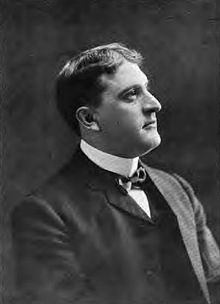
Frederick Augustus Heinze was young, brash, charismatic and rich. He’d made millions off the copper mines of Butte, Montana, by the time he was 30, beating back every attempt by competitors to run him out of business. After turning down Standard Oil’s $15 million offer for his copper holdings, Heinze arrived in New York in 1907 with $25 million in cash, determined to join the likes of J. P. Morgan and John D. Rockefeller as a major player in the world of finance. By the end of the year, however, the Copper King would be ruined, and his scheme to corner the stock of the United Copper Co. would lead to one of the worst financial crises in American history—the Panic of 1907.
He was born in Brooklyn, New York, in 1869. His father, Otto Heinze, was a wealthy German immigrant, and young Augustus was educated in Germany before he returned to the United States to study at Columbia University’s School of Mines. An engineer by training, Heinze arrived in Montana after his father died, and with a $50,000 inheritance he developed a smelting process that enabled him to produce copper from very low-grade ore in native rock more than 1,500 feet below ground. He leased mines and worked for other mining companies until he was able, in 1895, to purchase the Rarus Mine in Butte, which proved to be one of Montana’s richest copper properties.
In a rapid ascent, Heinze established the Montana Ore Purchasing Co. and became one of the three “Copper Kings” of Butte, along with Gilded Age icons William Andrews Clark and Marcus Daly. Whip smart and devious, Heinze took advantage of the so-called apex law, a provision that allowed owners of a surface outcrop to mine it wherever it led, even if it went beneath land owned by someone else. He hired dozens of lawyers to tie up his opponents—including William Rockefeller, Standard Oil and Daly’s Anaconda Copper Mining Co.—in court, charging them with conspiracy. “Heinze Wins Again” was the headline in the New York Tribune in May of 1900, and his string of victories against the most powerful companies in America made him feel invincible.
“He has youth and magnetism upon his side,” one Montana mining engineer said at the time, “and is quite the hero of the state today. He has had laws passed that benefit every smelter and independent mine owner.… The more he is threatened, the more he laughs, and the brighter his songs and his raillery, as he entertains at the club the lawyers or the experts upon either side equally well.”
The miners in Montana adored him because he cut their working day from 10 hours to 8, and he navigated the political world with the same ease that he pulled copper from the earth. In 1902, with authorized capital of $80 million, he incorporated the United Copper Co. and continued to chip away at the position of Anaconda’s corporate successor, the Amalgamated Copper Mining Co., atop the copper market. Stock in his company was literally traded outside the New York Stock Exchange in “on the curb” trading that would later become the American Stock Exchange.
Heinze was a hard-drinking ladies man who liked to gamble, and he spent lavishly in Butte’s saloons. He was friendly with legislators and judges. (A “pretty girl” alleged to have connections to the Copper King once offered a judge a bribe of $100,000. Heinze was implicated in the attempt but never charged.) Heinze bought a suite in the Waldorf-Astoria Hotel in New York City and paid for an entourage of friends to travel with him on yearly trips. “Broadway howls when the copper crowd whirl down in their automobiles,” one newspaper reported in 1906. “Everyone in the party enjoys himself carte blanche at Mr. Heinze’s expense on these tours, and the commotion the Western visitors created last May during the annual Heinze tour furnished the newspaper with columns of good stories.”
Yet despite his charm and gentlemanly demeanor, Heinze carried a reputation as a man not to be trifled with. When some thugs from Utah arrived in Butte and tried to assault Heinze and a friend on their way home from a club, the Copper King and his friend fought their attackers off, “pounding their heads in the gutter, and a few minutes later the thugs were handed over to the police,” one miner told the Boston Globe.
“Now, what are you going to do with a man who can’t be hit with a bullet, or clubbed out, or litigated out, or legislated out, has no debts and no speculations to corral, and in absolute fearlessness can return two blows for one in every field, can make millions when copper is up and can still make money when copper is at such a price as will make unprofitable the Anaconda works as at present operated?” the miner wondered at the time. “I believe Heinze is a winner.”
In 1907, Heinze set out for New York, moved United Copper to 42 Broadway in Manhattan, and determined to prove that he could succeed in finance. Though he knew little about banking, he aligned himself with Charles W. Morse, a Wall Street speculator who controlled several large banks and owned a big piece of the Mercantile National Bank. Together, the two men served as directors of more than a dozen banks, trust companies and insurance firms.
Down the hall from Heinze at 42 Broadway, his two brothers, Otto and Arthur, had set up a brokerage firm, hoping they too could make their fortunes on Wall Street. Otto is believed to have come up with the scheme to corner the stock on United Copper by engaging in a short squeeze, where the Heinzes would quickly purchase as much United Copper stock as they could, hoping to drive up prices and leaving short sellers (who had bet the price of United Copper would drop) no one else to sell but to the Heinzes, who could then effectively name their price.
Along with Morse, the Heinzes turned to the Knickerbocker Trust Co. to finance the scheme, but the bank’s president, Charles T. Barney, believed that the short squeeze required a great deal more money, and he declined to provide it. Otto was under the impression that the Heinze family controlled the majority of United Copper’s stock, and that a vast number of the company’s shares were being sold short. He decided to go ahead with the plan anyway. On Monday, October 14, 1907, he bought United Copper shares aggressively, quickly driving the price from $39 per share to $52.
The next day, the New York Tribune ran a story headlined, “United Copper Booming,” citing a “curb market sensation” that would enable Augustus Heinze to win a bet that United Copper would surpass the price of his antagonist Amalgamated Copper.
That morning, Otto issued a call for short sellers to return their “borrowed” United Copper stock, thinking he could dictate the price. But, as Barney had warned, there were more than enough United Copper stockholders to turn to, and the price began to tumble rapidly. By Wednesday, the stock had closed at $10, and the streets outside the New York Stock Exchange were calamitous. “Never has there been such wild scenes on the Curb,” the Wall Street Journal reported, “so say the oldest veterans of the outside market.”
Otto Heinze was ruined. His trading privileges were suspended, and his company was bankrupt. But the collapse of United Copper’s stock was so alarming, people began pulling their money from the banks and trusts that Augustus Heinze was associated with. The panic triggered a run on Knickerbocker Trust, the third-largest trust in New York City, forcing it to suspend operations. Barney turned to his old friend J.P. Morgan for help; after he was declined, he shot himself.
The crisis spread across the city and, soon, the nation. The Dow Jones Industrial Average plunged. The New York Clearing House demanded that Augustus Heinze and Morse resign from all of their banking interests. The Chicago Tribune published a report saying that a “young woman friend of F. Augustus Heinze” from Butte had caused the crash when she began “babbling” to friends about the corner months before, allowing “foes of Heinze” to learn of the scheme. Stock held by one such foe was “poured on the market in such volume,” the Tribune reported, “that the corner was smashed.”
J.P. Morgan did not ignore the crisis that followed. He’d rescued the U.S. Treasury once before, after railroad overbuilding and speculation had led to the Panic of 1893. Morgan quickly called a meeting of leading financiers, who pledged millions of their own funds to save failing banks, and Treasury Secretary George B. Cortelyou pledged an additional $25 million in liquidity. John D. Rockefeller deposited $10 million in one trust company, promising Morgan that he would dig deeper if necessary. For his part, Morgan purchased $30 million in New York City bonds, which prevented the city from going bankrupt. By early November, the markets began to recover.
The Panic of 1907 led to the creation of the Federal Reserve System in 1913, to give the government a mechanism for preventing banking panics. Morse and Augustus Heinze were charged with breaking banking laws in the attempted corner of United Copper stock, but while Morse was convicted, Heinze’s luck in the courts continued: He was eventually exonerated. He married an actress, Bernice Henderson, in 1910, but after the two had a son (Fritz Augustus Heinze, Jr.), they divorced in 1912.
United Copper was placed into receivership and defunct by 1913. Heinze returned to Montana poor, but a hero; his efforts on behalf of workers and independent miners had not been forgotten. He managed to recover some of his wealth with new mining projects in Idaho and Utah, but friends noted that he’d lost much of his spirit. After cirrhosis of the liver caused a stomach hemorrhage, Heinze died in November of 1914 in Saratoga, New York. He was only 44.
(Source: The Smithsonian Magazine)
More:
https://en.wikipedia.org/wiki/F._Augu...
http://history.econtrader.com/banking...
https://www.minneapolisfed.org/public...
http://ellenbaumler.blogspot.com/2013...
http://www.findagrave.com/cgi-bin/fg....
 by Richard E. Lingenfelter (no photo)
by Richard E. Lingenfelter (no photo) by Kenneth L. Fisher (no photo)
by Kenneth L. Fisher (no photo) by Robert F. Bruner (no photo)
by Robert F. Bruner (no photo) by
by
 Ellen Baumler
Ellen Baumler by
by
 Brad Tyer
Brad Tyer
 The Knickerbocker Trust and President Charles T. Barney
The Knickerbocker Trust and President Charles T. Barney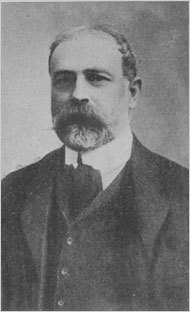
The continuing banking debacle presents some parallels with the sad case of Charles Tracy Barney, who in the Panic of 1907 lost control of the Knickerbocker Trust Company, which shut down to his disgrace. And just as Mr. Barney’s tragedy was playing out, the seeds were sown for the mutilation of his superb 1903 bank at Fifth Avenue and 34th Street, designed by Stanford White.
Mr. Barney was well connected in social and business circles when he became president of Knickerbocker Trust in 1897. In the next 10 years the bank’s deposits grew to $61 million from $10 million, and in 1901 Barney retained McKim, Mead & White to design a 14-story bank and office building at the northwest corner of 34th Street and Fifth Avenue, as important a location as is 57th and Fifth today.
For reasons unknown, Mr. Barney scaled the project back to three stories — but oh, what stories! Stanford White created one of the most spectacular banks in New York, a sumptuous Corinthian-columned temple of Vermont marble on the outside and Norway marble inside the high banking room.
Just before it was completed in 1903, the city brought suit to scale back Mr. Barney’s temple, noting that its columns, cornices and steps extended out onto the public sidewalks by as much as 15 feet. Such encroachments had long been commonplace and even, at least on Fifth Avenue, expressly permitted. But pressure was building to widen Fifth for the increasing glut of vehicles.
The Department of Buildings had approved the project every step of the way, but litigation persisted for years amid sympathy for the bank and its willingness to build a civic ornament. In November 1906, The Real Estate Record and Guide predicted that surely “special arrangements” for “really beautiful buildings” could be made.
The year 1907 saw an unsettled, declining stock market, a budget crisis in New York City, continued economic fallout from the San Francisco earthquake the year before, and other financial problems. In October, several banks connected with Charles W. Morse and F. Augustus Heinze failed.
Both men were held in low regard by many in the financial community. Indeed, Mr. Morse was convicted for bank fraud in 1910 in an unrelated case and, according to “The Panic of 1907” by Robert F. Bruner and Sean D. Carr (Wiley, 2007), while in prison met Charles Ponzi, who developed the infamous pyramid scheme.
When it became known that Mr. Morse and Mr. Heinze were associated in some projects with Mr. Barney, he was obliged to resign from the bank he had helped create on Monday, Oct. 21.
But in that nervous climate, rubbing shoulders with such men was enough to precipitate a run on the Knickerbocker. On Tuesday, Oct. 22, so many depositors showed up that the police were called in to keep order.
Lines wound around each other in giant spirals in the great marble banking room before snaking out the door. Men and women stood in separate lines — women usually conducted their business in a separate office. The bank had substantial assets, but most were not liquid, and it could pay out only $8 million. The Knickerbocker Trust Company closed that day at 12:35 p.m., shutting out hundreds of unsatisfied depositors.
In December, The American Review of Reviews said that the problem had largely been caused by the “unreasoning alarm of women depositors” and that the bank’s failure created “a veritable panic on a continental scale.”
The financier J. P. Morgan stepped in and organized the financial community to save most of the other faltering institutions, often by a hairbreadth. But he had come late into the Knickerbocker crisis, and considered it too weak to save.
The Panic of 1907 dissipated before the year was up, although some institutions never got back on track. It all came too late for Mr. Barney, who on Nov. 14, at the age of 56, shot himself. He lived for four hours.
Two days after the suicide, The American Architect commented coldly that the low-rise Knickerbocker bank, “so much in fashion just now, is really nothing so much as an advertisement,” and that “when disaster comes, a well-rented skyscraper is a more valuable asset.”
In March 1908, Knickerbocker Trust reopened, and The New York Tribune reported that all depositors received their money in full. That October, The New York Times said that almost every other bank had paid off fully, the recovery essentially complete, along with the stock market. For instance, U.S. Steel had been trading early in 1907 at 50 3/8, and fell to 21 7/8 after the crash. But a year later, it was back to 47 1/2.
The original Knickerbocker Trust building survived until 1921, according to an account in The Times. The little bank then sprouted a 10-floor enlargement, also designed by McKim, Mead & White. The vertical addition sheared off the columns and other projecting ornaments, but left the pilasters along with much of the bank’s original character, including the banking hall. In 1958 the lower floors, occupied by the Bowery Savings Bank, were completely modernized, becoming sheer walls of limestone.
The Panic of 1907 remains as a famous cautionary tale, but nothing remains of Charles Barney’s magnificent white marble vision.
(Source: The New York Times)
More:
https://en.wikipedia.org/wiki/Charles...
https://en.wikipedia.org/wiki/Knicker...
http://www.fas.harvard.edu/~histecon/...
http://cdnc.ucr.edu/cgi-bin/cdnc?a=d&...
http://stevenwarranresearch.blogspot....
 by David Wessel (no photo)
by David Wessel (no photo) by Robert F. Bruner (no photo)
by Robert F. Bruner (no photo) by Rasheed L. Muhammad (no photo)
by Rasheed L. Muhammad (no photo) by Nicholas Morris (no photo)
by Nicholas Morris (no photo) by
by
 Roger Lowenstein
Roger Lowenstein
 George B. Cortelyou
George B. Cortelyou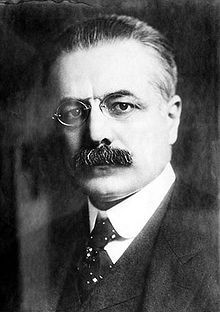
George Bruce Cortelyou was born in New York City on July 26, 1862, graduating from the State Normal School of Westfield, Massachusetts, in 1882 and from Georgetown University Law School in 1895. He began his career as a stenographer and typist with the U.S. Customs service. Cortelyou served a clerk in the postmaster general's office in 1891, later moving to the White House in 1895 as stenographer to President Grover Cleveland.
Cleveland recommended Cortelyou to his successor, President William McKinley, who made Cortelyou his assistant secretary in March 1897. Cortelyou then became secretary to the President in 1900 and remained in that position following McKinley's assassination. But Cortelyou would be more than just a secretary to Theodore Roosevelt -- he became the President's most trusted and intimate advisor. After Congress established the Department of Commerce and Labor as a ninth cabinet department, Roosevelt named Cortelyou its first secretary in 1903. Cortelyou resigned in June 1904, to become chairman of the Republican National Committee and to manage Roosevelt's 1904 reelection campaign. Roosevelt named Cortelyou postmaster general at the start of his new administration in March 1905. Cortelyou perfected the free rural mail delivery system and reduced the postal deficit to the lowest point in years. He stepped down as postmaster general in March 1907 to become secretary of the treasury. In that position, Cortelyou presided over the economic panic of 1907, realizing that Treasury did not have the power to maintain economic stability; at the same time, he affirmed the Treasury's role in protecting the banking system.
Cortelyou also advocated the creation of a central banking system and increasing the money supply. These ideas bore fruit with the passage of the 1907 Aldrich-Vreeland Act, which eventually created the Federal Reserve System in 1913. Cortelyou remained in TR's cabinet until the end of the administration, after which he became head of the Consolidated Gas Company. George Cortelyou died in New York City on October 23, 1940.
(Source: Miller Center)
More:
https://en.wikipedia.org/wiki/George_...
https://www.whitehousehistory.org/a-p...
https://www.treasury.gov/about/histor...
http://washingtonsecretaries.blogspot...
http://cabinet-members.insidegov.com/...
 by George B. Cortelyou (no photo)
by George B. Cortelyou (no photo) by David Greenberg (no photo)
by David Greenberg (no photo) by
by
 Edmund Morris
Edmund Morris by
by
 Edmund Morris
Edmund Morris by
by
 Doris Kearns Goodwin
Doris Kearns Goodwin
 Ransom H. Thomas
Ransom H. Thomas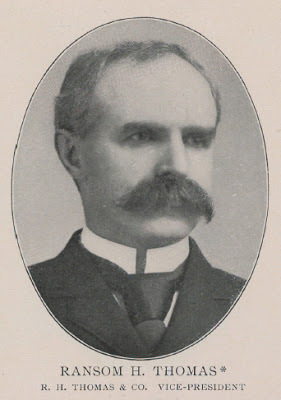
Ransom H. Thomas, was head of the New York Stock Exchange firm of R. H. Thomas & Son and President of the New York Stock Exchange and resided in Morristown, N. J.
After nearly fifty years of continuous membership in the New York Stock Exchange, Thomas sold his seat as a board member and on Nov. 5, 1874 he was first elected to the privileges of the floor. Throughout this long period he was identified with the chief committees of the Exchange and at the time of his death was still President of the Stock Exchange Building Company.
(Source: 1898 Blogspot)
More:
http://gsrpdf.lib.msu.edu/ticpdf.py?f...
http://query.nytimes.com/gst/abstract...
https://www.myheritage.com/research/c...
http://www.npr.org/templates/story/st...
http://www.cigaraficionado.com/webfea...
 by Jim Huffstodt (no photo)
by Jim Huffstodt (no photo) by Robert F. Bruner (no photo)
by Robert F. Bruner (no photo) by Kwasi Kwarteng (no photo)
by Kwasi Kwarteng (no photo) by Neil Shafer (no photo)
by Neil Shafer (no photo) by
by
 Jean Strouse
Jean Strouse
 New York Stock Exchange
New York Stock Exchange
The New York Stock and Exchange Board was formed on March 8, 1817. The name was shortened to The New York Stock Exchange (NYSE) in 1863. The NYSE is home to more than 2,800 companies whose combined value exceeds $15 trillion. The stocks traded at the exchange are face-to-face trades.
The exchange has experienced a few times that it had to close its doors, including the beginning of World War I and the September 11, 2001, terrorist attack. Black Thursday, October 24, 1929, signaled the beginning of a new development for the stock exchange in which it was forced to implement new recovery systems in case of a "crash." In 1934, the exchange was registered as a national securities exchange with the United States Securities and Exchange Commission.
In the beginning
The New York Stock Exchange's origin can be traced all the way back to the signing of the Buttonwood Agreement on May 17th, 1792. That agreement was struck by a group of 24 New York City stockbrokers and merchants at 68 Wall Street, under a buttonwood tree. Originally, there were five securities traded in New York City with the first listed company on the NYSE being none other than the Bank of New York.
National Securities Exchange
On October 1, 1934, the NYSE registered as a national securities exchange with the U.S. Securities and Exchange Commission. The Governing Committee was the primary governing body until 1938, at which time the exchange hired its first paid president and created a 33-member board of governors.
In 1971 the exchange was incorporated as a not-for-profit corporation, and in 1972 the members voted to replace the board of governors with a 25-member board of directors. That newly formed board was equipped with 12 representatives, a chairman and CEO representing public interest, and 12 representatives from the securities industry.
Still a powerhouse
Today, the New York Stock Exchange (NYSE) is the second largest stock exchange in the world. Leading up to 1996, it was the biggest exchange until its trading volume was exceeded by that of National Association of Securities Dealers Automated Quotations (NASDAQ).
The NYSE is now a for-profit business. The transformation into a for-profit organization occurred when the fully electronic stock exchange Archipelago merged in late April of 2005.
One can find the main building of the New York Stock Exchange, Inc., located at 18 Broad Street, at the corner of Wall Street, on the south side of Wall Street, in New York City, New York.
(Source: U-S-History.com)
More:
https://www.loc.gov/rr/business/hotto...
https://www.fxcm.com/insights/new-yor...
https://en.wikipedia.org/wiki/New_Yor...
http://business.illinois.edu/broker/c...
https://www.nyse.com/index
 by Francis L. Eames (no photo)
by Francis L. Eames (no photo) by Henry George Stebbins Noble (no photo)
by Henry George Stebbins Noble (no photo) by Otto H. Kahn (no photo)
by Otto H. Kahn (no photo) by James E. Buck (no photo)
by James E. Buck (no photo) by James E. Buck (no photo)
by James E. Buck (no photo)
 Henry Clay Frick
Henry Clay Frick
Henry Clay Frick, (born Dec. 19, 1849, West Overton, Pa., U.S.—died Dec. 2, 1919, New York City) U.S. industrialist, art collector, and philanthropist who helped build the world’s largest coke and steel operations.
Frick began building and operating coke ovens in 1870, and the following year he organized Frick and Company. Taking advantage of the difficult times following the financial panic of 1873, he acquired extensive coal deposits and supplied Pittsburgh with the coke required for its steel and iron industry.
In 1889 Frick was made chairman of Carnegie Brothers and Company to reorganize their steel business. He initiated far-reaching improvements and bought out Carnegie’s chief competitor, the Duquesne Steel Works. He was responsible for building Carnegie into the largest manufacturer of steel and coke in the world. As a result of his leading role in the dispute during the Homestead (Pa.) steel strike of 1892, he was shot and stabbed by Alexander Berkman, an anarchist, but survived.
Frick played a major role in the formation of the United States Steel Corporation in 1901 and later became a director. He also served as a director of a number of railroads.
Upon his death Frick bequeathed $15,000,000 and his Fifth Avenue mansion to New York City to establish the Frick Collection, a trove of paintings, bronzes, and enamels he had collected over a 40-year period. It is generally considered one of the great privately owned museums of the world. His other gifts include a 150-acre (61-hectare) park and a $2,000,000 endowment to the city of Pittsburgh, as well as liberal contributions to Princeton University.
(Source: Encyclopedia Britannica)
More:
http://www.pittsburghquarterly.com/in...
https://en.wikipedia.org/wiki/Henry_C...
http://www.encyclopedia.com/topic/Hen...
http://query.nytimes.com/gst/abstract...
https://www.libraries.psu.edu/finding...
 by Martha Frick Symington Sanger (no photo)
by Martha Frick Symington Sanger (no photo) by George Harvey (no photo)
by George Harvey (no photo) by Quentin R. Skrabec Jr. (no photo)
by Quentin R. Skrabec Jr. (no photo) by F.L. Light (no photo)
by F.L. Light (no photo) by
by
 Les Standiford
Les Standiford
 Charles Newell Fowler, Sr.
Charles Newell Fowler, Sr.
Charles Newell Fowler, Sr. (November 2, 1852, Lena, Illinois – May 27, 1932, Orange, New Jersey) was an American Republican Party politician who represented New Jersey's 8th congressional district in the United States House of Representatives from 1895 to 1903, and the 5th district from 1903 to 1911.
Fowler was born in Lena, Illinois on November 2, 1852. He attended the public schools in Lena and Beloit College. He graduated from Yale College in 1876 where he was a member of Skull and Bones. He then attended the University of Chicago Law School and graduated in 1878. He was admitted to the bar in 1878 and commenced the practice of law in Beloit, Kansas. Fowler moved to Cranford, New Jersey in 1883 and to Elizabeth, New Jersey in 1891 and engaged in banking, serving as president of a mortgage company.
Fowler was elected as a Republican to the Fifty-fourth and to the seven succeeding Congresses, serving in office from March 4, 1895 to March 3, 1911. He was chairman of the Committee on Banking and Currency (Fifty-seventh through Sixtieth Congresses). He was an unsuccessful candidate for nomination for election to the United States Senate in 1910.
Fowler was a member of the Republican State committee from 1898 to 1907. After leaving Congress, he resumed banking activities at Elizabeth. He also engaged in literary pursuits and operated a group of marble quarries in Vermont. In 1930, he moved to Orange, New Jersey, where he died on May 27, 1932. He was interred in Fairview Cemetery in Westfield, New Jersey. (Source: Wikipedia)
More:
http://www.findagrave.com/cgi-bin/fg....
http://www.ancestry.com/genealogy/rec...
http://www.ovguide.com/charles-n-fowl...
http://www.biblebelievers.org.au/bone...
https://archive.org/stream/fowlerfami...
http://www.mindfully.org/Reform/Skull...
http://bioguide.congress.gov/scripts/...
http://query.nytimes.com/gst/abstract...
http://mssa.library.yale.edu/obituary...
http://politicalgraveyard.com/bio/fow...
(no image)Address of Hon. Charles N. Fowler, of New Jersey, in the House of representatives, Wednesday, March 31, 1897 .. by Charles N. Fowler (no photo)
(no image)An American Banking System, from National Issues of 1916, by Charles Newell Fowler (no photo)
(no image)The Fowler Financial and Currency Bill: Speechd in the House of Representatives, Thursday June 26, 1902 by Charles Newell Fowler (no photo)
(no image)An American Banking System, from National Issues of 1916, by Charles Newell Fowler (no photo)
(no image)The United States Reserve Bank: The Fundamental Defects of the Federal Reserve System Exposed and the Necessary Remedy by Charles Newell Fowler (no photo)
 by Matthew Adams Stickney (no photo)
by Matthew Adams Stickney (no photo) by Charles N. Fowler (no photo)
by Charles N. Fowler (no photo) by
by
 Antony C. Sutton
Antony C. Sutton
 Grant B. Schley
Grant B. Schley
Grant Schley was born in 1845 at Chapinville, N.Y., near Syracuse, to a farm family of humble circumstances. He obtained only an elementary school education. At the age of 16 he went to work as a peach picker and shipping clerk for Wells, Butterfield and Company, a Syracuse firm which later merged with others to become the American Express Company.
In 1885, with John G. Moore, he formed the brokerage house of Moore and Schley, and in 1900 with Thomas Fortune Ryan, he effected the combination of the American Tobacco Company. One of Schley's major interests was the Elliot-Fisher Company, which was later merged into the Underwood Typewriter Company, of which he was chairman of the board for many years.
Schley became president of a number of mining companies, the Croesus Gold Mining Company and Manufacturing Company, El Potosi Mining Company, the Tintic Company, the Howe Sound Company, and the Chihuahau Mining Company, and was vice president of the Electric Storage Battery Company. He was a director of the American Smelting and Refining Company, the Northern Pacific Railway Company, the Republic Iron and Steel Company and the Pittsburgh Coal Company.
(Source: Genealogy.com)
More:
http://query.nytimes.com/gst/abstract...
https://en.wikipedia.org/wiki/John_Go...
http://www.smokershistory.com/Chase.html
http://www.jerseyhistory.org/findinga...
http://www.nj.com/specialprojects/ind...
 by Robert F. Bruner (no photo)
by Robert F. Bruner (no photo) by William Henry Harbaugh (no photo)
by William Henry Harbaugh (no photo) by Judy Emerson (no photo)
by Judy Emerson (no photo) by Ethel Armes (no photo)
by Ethel Armes (no photo) by
by
 Ron Chernow
Ron Chernow
 Edward King and Union Trust Company
Edward King and Union Trust Company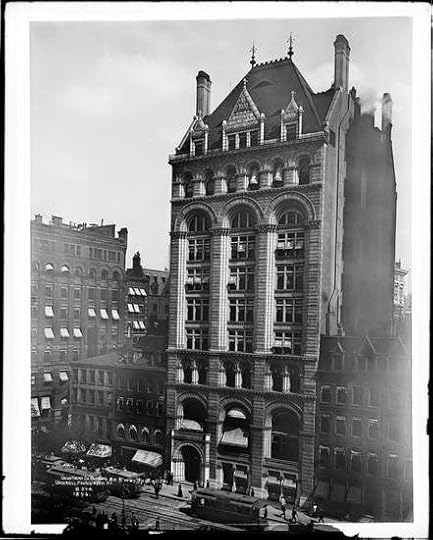
Union Trust Co Bldg, 80 Broadway to Wall Street, 1896
Edward King was the banker and President of the Union Trust Company from 1873 until 1909. He was born in Weehawken, New Jersey in 1833 and was the son of James Gore King, a banker. He graduated from Harvard in 1853 and began his business career with his father's firm.
For more than half a century he was a solid figure in the financial world. In 1872, King was elected President of the New York Stock Exchange and became President of the Union Trust Company in 1873. He was also director of the Hanover National Bank and the Northern Assurance Company, as well as a member of the Chamber of Commerce.
King was also devoted to the arts and sciences and was a member of the Metropolitan Museum of Art, National Academy of Design, and the American Museum of Natural History. He was also a member of the Harvard, University, City, and Riding Clubs, The Nicholas Society, and Century Association. He was Treasurer of the Board of Trustees of the New York Public Library and a Governor of the New York Hospital.
King had been married two times. His first wife Isabelle Ramsey Cochrane was thirty-three when she died. He later married Elizabeth Fisher. He had six children.
(Source: The New York Times)
More:
https://books.google.com/books?id=FWU...
https://books.google.com/books?id=tgs...
https://books.google.com/books?id=5_n...
https://books.google.com/books?id=A74...
http://cdnc.ucr.edu/cgi-bin/cdnc?a=d&...
 by Dinah Dunn (no photo)
by Dinah Dunn (no photo) by Herbert H. Harwood Jr. (no photo)
by Herbert H. Harwood Jr. (no photo) by Laura Dusen (no photo)
by Laura Dusen (no photo) by
by
 Allan Pinkerton
Allan Pinkerton by
by
 Ben Macintyre
Ben Macintyre
 An article explaining what GNP is and the differences between it and GDP:
An article explaining what GNP is and the differences between it and GDP:"Gross National Product - GNP" on Investopedia
An article explaining what goes into calculating GDP and GNP:
"How to Calculate GNP" by Jeffrey Glen on Investor Guide
 Bentley wrote: "Sagamore Hill ..."
Bentley wrote: "Sagamore Hill ..."We visited Long Island last week and one day went to Sagamore Hill. They have totally redone the place. You can get a tour but you have to get there early because they fill up fast. The house used to be a forest green color but now it is grey (see photo attached.) The tour was excellent and the Old Orchard Museum was also great. They had lots of exhibits about stuff we are reading in this book! It was very cool. Unfortunately though I did not see anything about La Follete.

I was thinking of taking a trip up there last week myself but thought I wanted to go on a day with no rain. I wonder why they did not keep it a forest green which is more in line with Theodore Roosevelt himself and what he held dear. Do you think that it is vastly improved. Glynn thank you for the photo. It looks like you found some blue sky on the day you went.
 Henry Cabot Lodge of Massachusetts
Henry Cabot Lodge of Massachusetts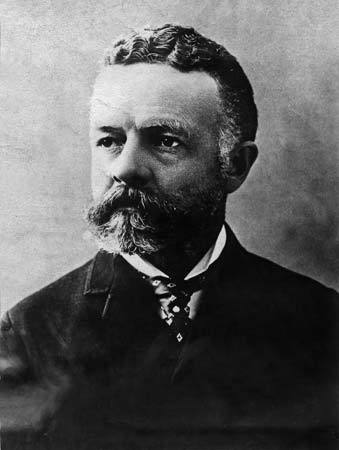
Henry Cabot Lodge, (born May 12, 1850, Boston, Massachusetts, U.S.—died November 9, 1924, Cambridge, Massachusetts) Republican U.S. senator for more than 31 years (1893–1924); he led the successful congressional opposition to his country’s participation in the League of Nations following World War I.
In 1876 Lodge was one of the first to be granted a doctorate in history from Harvard University. He remained at Harvard for the next three years as instructor in American history and retained an active interest in this field throughout his life, editing scholarly journals and writing or editing works on major figures and events in the nation’s history. He launched his political career in the state legislature (1880–81) and in the U.S. House of Representatives (1887–93) and then was elected to the U.S. Senate.
With the entrance of the United States into World War I (1917), he called for united support of the war effort. Initially he endorsed an international peacekeeping mechanism in an address before the League to Enforce Peace (May 1916), but, when a world organization with compulsory arbitration was advocated by Pres. Woodrow Wilson, Lodge felt that the nation’s sovereignty was at stake and that it would be fatal to bind the nation to international commitments that the United States would not or could not keep. When in 1919 the Republicans gained control of the Senate, Lodge became chairman of the Foreign Relations Committee. He was thus in a position to mastermind the strategy of opposition to adoption of the Treaty of Versailles, including the League of Nations covenant. He adopted a dual course of action: first, delaying tactics to allow enthusiasm for the League to wane; second, introducing a series of amendments (the Lodge reservations) that would require the approval of Congress before the United States would be bound by certain League decisions. Thus, Lodge became the main leader of the U.S. isolationists. Wilson refused to accept the Lodge reservations, feeling that they would destroy the basic intent of the League. The treaty was defeated in the Senate, and the onus of rejection fell on the Wilsonians.
The landslide election of Republican Warren G. Harding in 1920 was considered a vindication of the Lodge position, and with enhanced prestige he went on to serve as one of four U.S. delegates to the Washington Conference on the Limitation of Armaments (1921). (Source: Encyclopedia Britannica)
More:
https://en.wikipedia.org/wiki/Henry_C...
http://www.pbs.org/wgbh/amex/wilson/p...
http://www.u-s-history.com/pages/h134...
http://www.senate.gov/artandhistory/h...
http://www.biography.com/people/henry...
http://www.jstor.org/stable/25102181?...
http://query.nytimes.com/gst/abstract...
http://query.nytimes.com/gst/abstract...
http://query.nytimes.com/gst/abstract...
(no image)The Gentleman from Massachusetts Henry Cabot Lodge by Karl Schriftgiesser (no photo)
 by Henry Cabot Lodge (no photo)
by Henry Cabot Lodge (no photo) by Henry Cabot Lodge (no photo)
by Henry Cabot Lodge (no photo) by John A. Garraty (no photo)
by John A. Garraty (no photo) by Norman H. White (no photo)
by Norman H. White (no photo) by Henry Cabot Lodge (no photo)
by Henry Cabot Lodge (no photo) by William J. Miller (no photo)
by William J. Miller (no photo) by William C. Widenor (no photo)
by William C. Widenor (no photo) by
by
 Evan Thomas
Evan Thomas
 I am I the only one who is lost in these discussions? I cant tell if I am discussing the book or the bibliography of the book? : )
I am I the only one who is lost in these discussions? I cant tell if I am discussing the book or the bibliography of the book? : )
 Gary wrote: "I am I the only one who is lost in these discussions? I cant tell if I am discussing the book or the bibliography of the book? : )"
Gary wrote: "I am I the only one who is lost in these discussions? I cant tell if I am discussing the book or the bibliography of the book? : )"Hi Gary. This particular thread is indeed a Glossary that we are building. It is a place for you to come and review information that is discussed in the book in more detail. We hope it will give more context and supplement the reading.
As for the discussions, please find the threads that start "THE DISCUSSION IS OPEN - WEEK XXX - PRESIDENTIAL SERIES: UNREASONABLE MEN" Each one is labeled for one week of the discussion and follows the syllabus that is outlined in the first week.
We are currently wrapping up week four, but the threads always stay open so you can post your thoughts and comments at anytime.
Here is the thread for week four:
https://www.goodreads.com/topic/show/...
I hope that helps!
message 137:
by
Bentley, Group Founder, Leader, Chief
(last edited May 07, 2016 04:54PM)
(new)
-
rated it 4 stars
Thank you Teri - Gary each non spoiler weekly thread has a title on it for that week - the first post tells what are the assigned pages that can be discussed on that week's thread. So far we have had four weekly threads. On Monday we start Week Five. There is a table of contents thread and a glossary thread which gives you more information about various personages - YOU ARE HERE. There is a bibliography thread which lists the books that the author used in his research and there is a table of contents and syllabus thread which tells you what pages to read each week. There is a Q&A thread where you can ask questions of the author.
By the way on each and every thread - message 1 gives all of the links to the various threads. And the weekly threads are clearly marked. Additionally, sometime during the week - I remind folks of all of the threads available and give them the links. So I am not sure why you are confused but I hope this helps. Sometimes the first time you are going through things with us - there is so much here that you get confused. Hope this unconfuses things.
The Glossary thread is a SPOILER THREAD.
By the way on each and every thread - message 1 gives all of the links to the various threads. And the weekly threads are clearly marked. Additionally, sometime during the week - I remind folks of all of the threads available and give them the links. So I am not sure why you are confused but I hope this helps. Sometimes the first time you are going through things with us - there is so much here that you get confused. Hope this unconfuses things.
The Glossary thread is a SPOILER THREAD.
 Senator Julius Caesar Burrows of Michigan
Senator Julius Caesar Burrows of Michigan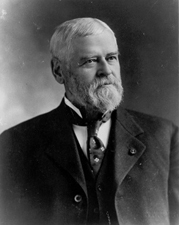
BURROWS, Julius Caesar, a Representative and a Senator from Michigan; born in North East, Erie County, Pa., January 9, 1837; moved with his parents to Ashtabula County, Ohio; attended district school, Kingsville Academy, and Grand River Institute, Austinburg, Ohio; studied law; admitted to the bar at Jefferson, Ohio, in 1859; moved to Richland, Kalamazoo County, Mich., in 1860; principal of the Richland Seminary; commenced the practice of law in Kalamazoo in 1861; raised an infantry company in 1862; served as its captain until the fall of 1863; elected circuit court commissioner in 1864; prosecuting attorney for Kalamazoo County 1866-1870; declined appointment as supervisor of internal revenue for Michigan and Wisconsin in 1868; elected as a Republican to the Forty-third Congress (March 4, 1873-March 3, 1875); chairman, Committee on Expenditures in the Department of the Navy (Forty-third Congress); unsuccessful candidate for reelection in 1874; elected to the Forty-sixth and Forty-seventh Congresses (March 4, 1879-March 3, 1883); chairman, Committee on Territories (Forty-seventh Congress); unsuccessful candidate for reelection in 1882; elected a Republican to the Forty-ninth and to the five succeeding Congresses and served from March 4, 1885, until his resignation on January 23, 1895, having been elected Senator; chairman, Committee on Levees and Improvements of Mississippi River (Fifty-first Congress); elected as a Republican to the United States Senate to fill the vacancy caused by the death of Francis B. Stockbridge; reelected in 1899 and 1905 and served from January 24, 1895, to March 3, 1911; unsuccessful candidate for renomination; chairman, Committee on Revision of the Laws of the United States (Fifty-fourth through Fifty-sixth Congresses), Committee on Privileges and Elections (Fifty-seventh through Sixty-first Congresses); member of the National Monetary Commission and its vice chairman 1908-1912; retired from active business pursuits and political life; died in Kalamazoo, Mich., November 16, 1915; interment in Mountain Home Cemetery. (Source: Biographical Directory of the United States Congress)
More:
https://en.wikipedia.org/wiki/Julius_...
https://www.geni.com/people/Julius-C-...
http://history.house.gov/People/Detai...
http://www.findagrave.com/cgi-bin/fg....
http://onlinebooks.library.upenn.edu/...
https://news.google.com/newspapers?ni...
https://news.google.com/newspapers?ni...
http://www.ultimatehistoryproject.com...
http://www.worldcat.org/title/jc-burr...
(no image)Julius Caesar Burrows, the only living Columbian orator. by Henry Harrison Smith (no photo)
 by William Dana Orcutt (no photo)
by William Dana Orcutt (no photo) by Ralph A. Rossum (no photo)
by Ralph A. Rossum (no photo) by H. Wayne Morgan (no photo)
by H. Wayne Morgan (no photo) by Richard Hamilton (no photo)
by Richard Hamilton (no photo) by Horace Samuel Merrill (no photo)
by Horace Samuel Merrill (no photo) by Congress (U.S.), Joint Committee on Printing (no photo)
by Congress (U.S.), Joint Committee on Printing (no photo) by Jo Anne McCormick Quatannens (no photo)
by Jo Anne McCormick Quatannens (no photo) by Louise Barnett (no photo)
by Louise Barnett (no photo)
 Helen Louise Herron "Nellie" Taft
Helen Louise Herron "Nellie" Taft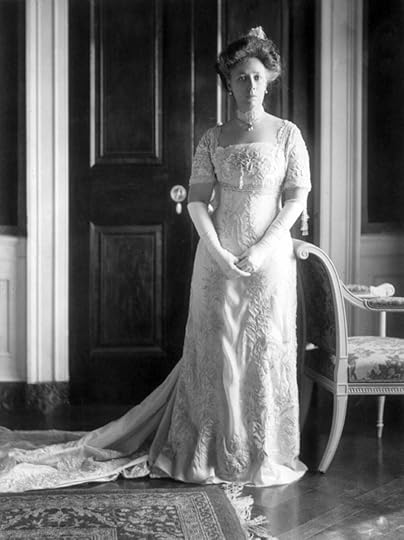
Helen Taft was born on June 2, 1861, in Cincinnati, Ohio, and went on to work as a schoolteacher before marrying William Howard Taft in 1886. An independent thinker, she became her husband’s primary political adviser and organized his presidential campaign. As first lady she established new traditions and was the first presidential partner to have her memoirs published. She died on May 22, 1943.
Helen Taft, born Helen Louise Herron on June 2, 1861, in Cincinnati, Ohio, had politics in blood. Her father, John Williamson Herron, was a district attorney, judge and Republican Party activist. Her mother, Harriet Collins Herron, was the daughter and sister of U.S. congressmen. Helen would later recall that the only significant incident in her childhood was a visit to the White House with her parents at the invitation of President Rutherford B. Hayes, a family friend.
While music was Helen's passion while growing up, it wasn't a career option for a woman in Victorian 19th century America. Nicknamed "Nellie," Helen went to private schools before studying for one year at the University of Cincinnati. Afterward, she taught briefly at a school for boys in Cincinnati. She met "Will" Taft at a sledding party in the winter of 1880, and after a long courtship, the couple married in 1886. Taft was a young lawyer with aspirations to become a U.S. Supreme Court justice, but Helen had other ideas.
Helen Taft was her husband's best advocate as he worked his way through state and federal political appointments. In 1890, while William Taft was serving as solicitor general, Helen established connections in Washington's high social circles. After the Spanish-American War, President William McKinley appointed Taft governor of the Philippines. Excited that the appointment would give her husband valuable experience as a chief executive, Helen traveled with him, and made an effort to learn the Filipino language and culture.
In 1904, President Theodore Roosevelt offered Taft the position of secretary of war, and Helen encouraged him to accept, seeing the job as a possible stepping stone to the White House. In 1908, after Roosevelt decided not to run for re-election, Helen met with him privately and convinced him to support her husband for the presidency. During the 1908 presidential election campaign, Helen became Taft's chief advisor, consulting him on how to position himself, sometimes even suggesting the language he used in his speeches. In November 1908, Taft won the election against Democrat William Jennings Bryan.
After only two months in the White House, Helen suffered a stroke that left her temporarily unable to speak. With indomitable will, she worked her way back to health. Upon her return, she concentrated on the social image of the administration, organizing lavish dinners and functions. She also continued her interest in politics, opposing prohibition, and promoting women's suffrage and rights for factory workers. Perhaps Helen Taft's greatest legacy was arranging the planting of 3,000 Japanese cherry blossom trees along the Tidal Basin, south and west of Independence Mall, in Washington, D.C.
After William Howard Taft lost his bid for re-election in 1912, the couple moved to Connecticut, where Taft taught law at Yale University. In 1921, when Taft was confirmed chief justice of the Supreme Court, the couple returned to Washington, D.C., where Helen would remain until her husband's death in 1931. After returning to the nation's capital, Helen traveled and supported moderate Republican causes, as well as her son Robert's career as a U.S. senator.
Helen Taft died on May 22, 1943, in Washington, D.C. She is buried next to her husband at the Arlington National Cemetery.
(Source: Biography.com)
More:
https://en.wikipedia.org/wiki/Helen_H...
http://www.firstladies.org/biographie...
https://www.whitehouse.gov/1600/first...
http://www.history.com/topics/first-l...
https://www.pinterest.com/pin/1728257...
https://www.geni.com/people/Helen-Nel...
http://www.meme-pops.com/presidents/h...
https://www.instagram.com/p/BBiGssZsEcA/
http://www.herbwalker.com/obituaries/...
http://www.pocketwatchconspiracy.com/...
http://www.nndb.com/people/792/000128...
https://blog.letteddywin.com/tag/hele...
http://www.firstladies.org/blog/nelli...
(no image)Loves, Lies, and Tears, An Intimate Look at America's First Ladies Martha Washington to Helen Taft by Jacqueline Berger (no photo)
 by Helen Herron Taft (no photo)
by Helen Herron Taft (no photo) by Nancy D. Hendricks (no photo)
by Nancy D. Hendricks (no photo) by Rae Lindsay (no photo)
by Rae Lindsay (no photo) by Lewis L. Gould (no photo)
by Lewis L. Gould (no photo) by Judith E. Greenberg (no photo)
by Judith E. Greenberg (no photo) by
by
 William H. Taft
William H. Taft
 Philander Chase Knox
Philander Chase Knox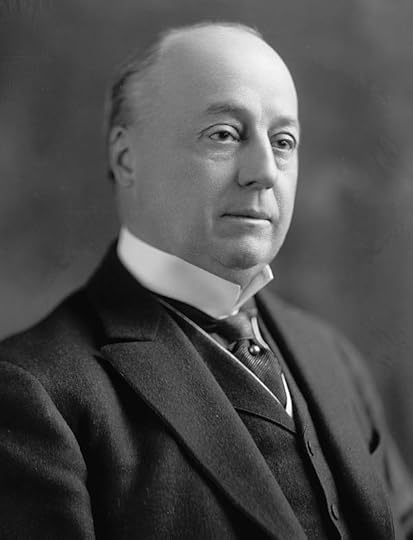
KNOX, Philander Chase, a Senator from Pennsylvania; born in Brownsville, Fayette County, Pa., May 6, 1853; attended the University of West Virginia at Morgantown, and graduated from Mount Union College, Alliance, Ohio, in 1872; studied law; admitted to the bar in 1875 and commenced practice in Pittsburgh, Pa.; assistant United States district attorney for the western district of Pennsylvania in 1876; president of the Pennsylvania Bar Association in 1897; appointed Attorney General of the United States in the Cabinet of President William McKinley in 1901; reappointed by President Theodore Roosevelt and served until June 1904, when he resigned, having been appointed as a Republican to the United States Senate to fill the vacancy caused by the death of Matthew S. Quay; subsequently elected to fill the unexpired term and for the full term in 1905 and served from June 10, 1904, until March 4, 1909, when he resigned to enter the Cabinet; chairman, Committee on Coast Defenses (Fifty-eighth and Fifty-ninth Congresses, Committee on Rules (Sixtieth Congress); appointed Secretary of State by President William Taft 1909-1913; again elected to the United States Senate and served from March 4, 1917, until his death in Washington, D.C., October 12, 1921; chairman, Committee on Rules (Sixty-sixth and Sixty-seventh Congresses); interment in Washington Memorial Cemetery, Valley Forge, Pa.
(Source: Biographical Directory of the United States Congress)
More:
https://en.wikipedia.org/wiki/Philand...
https://history.state.gov/departmenth...
http://www.encyclopedia.com/topic/Phi...
http://explorepahistory.com/hmarker.p...
http://biography.yourdictionary.com/p...
https://www.geni.com/people/Philander...
http://www.givemeliberty.org/features...
https://www.govtrack.us/congress/memb...
http://query.nytimes.com/gst/abstract...
http://query.nytimes.com/mem/archive-...
http://query.nytimes.com/mem/archive-...
http://digitalcommons.law.yale.edu/cg...
https://www.nps.gov/jofl/learn/histor...
(no image)Speech of Senator Philander C. Knox of Pennsylvania: At a Mass Meeting Held in the Academy of Music, Philadelphia, Held Under the Auspices of the Manufacturers Club of Philadelphia, Saturday Evening, October First 1904 by Philander C Knox (no photo)
(no image)Some of the Public Services of Honorable Philander Chase Knox: Speech of Hon. James Francis Burke Before the Pennsylvania Delegation in Congress on Wednesday, December 4, 1907 by James Francis Burke (no photo)
(no image)An Uncertain Tradition: American Secretaries Of State In The Twentieth Century by Norman A. Graebner (no photo)
(no image)The Department of State: A History of Its Organization, Procedure, and Personnel by Graham H. Stuart (no photo)
(no image)A History of the Northern Securities Case by Balthasar Henry Meyer (no photo)
(no image)The Spirit and Purpose of American Diplomacy by Philander Chase Knox (no photo)
(no image)Dictionary of American Biography Vol -XV by
 Dumas Malone
Dumas Malone by Kenneth C. Martis (no photo)
by Kenneth C. Martis (no photo) by Nancy V. Baker (no photo)
by Nancy V. Baker (no photo) by Philander Chase Knox (no photo)
by Philander Chase Knox (no photo)
 Representative James Sherman of New York
Representative James Sherman of New York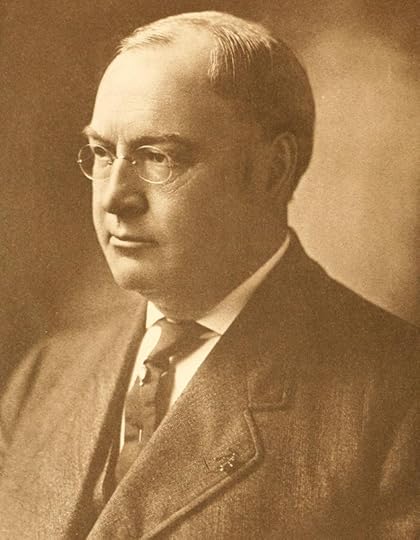
SHERMAN, James Schoolcraft, a Representative from New York and a Vice President of the United States; born in Utica, N.Y., October 24, 1855; attended the public schools; pursued academic and collegiate courses and graduated from Hamilton College, Clinton, N.Y., in 1878; studied law; admitted to the bar in 1880 and commenced practice in Utica, N.Y.; president of the Utica Trust & Deposit Co. and of the New Hartford Canning Co.; mayor of Utica 1884; elected as a Republican to the Fiftieth and Fifty-first Congresses (March 4, 1887-March 3, 1891); chairman, Committee on Indian Affairs (Fifty-fourth through Sixtieth Congresses); unsuccessful candidate for reelection in 1890 to the Fifty-second Congress; elected to the Fifty-third and to the seven succeeding Congresses (March 4, 1893-March 3, 1909); was not a candidate for reelection, having been nominated as the Republican candidate for Vice President on the ticket with William Taft; elected Vice President of the United States in 1908 and served from March 4, 1909, until his death; had been renominated for Vice President in June 1912; died in Utica, Oneida County, N.Y., October 30, 1912; interment in Forest Hill Cemetery.
(Source: Biographical Directory of the United States Congress)
More:
http://kurtshistoricsites.com/VP_Jame...
https://en.wikipedia.org/wiki/James_S...
http://www.senate.gov/artandhistory/h...
http://www.britannica.com/biography/J...
https://www.geni.com/people/James-S-S...
https://www.govtrack.us/congress/memb...
http://history.house.gov/People/Listi...
http://millercenter.org/president/ess...
http://www.senate.gov/artandhistory/h...
(no image)Vice Presidents Of The United States 1789 1993 by Mark O. Hatfield (no photo)
 by Kenneth C. Martis (no photo)
by Kenneth C. Martis (no photo) by National Republican Club (no photo)
by National Republican Club (no photo) by
by
 U.S. Congress
U.S. Congress by
by
 U.S. Congress
U.S. Congress
 Thomas Fitzsimons of Pennsylvania
Thomas Fitzsimons of Pennsylvania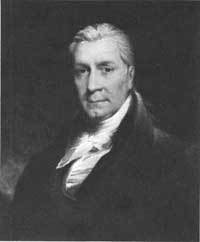
Thomas Fitzsimons (1741–1811) was an American merchant and statesman of Philadelphia, Pennsylvania. He represented Pennsylvania in the Continental Congress, the Constitutional Convention, and the U.S. Congress.
Fitzsimons' ancestry has not been verified, but one theory is that Fitzsimons was born at Ballikilty, north Co. Wexford, Leinster province, Ireland, in October, 1741. He was a member of a collection of Irish families with the name "Fitzsymons" and it variants. In the mid-1750s he immigrated to Philadelphia where his father soon died. However, Fitzsimons had enough education that he could begin work as a clerk in a mercantile house. He married Catherine Meade on November 23, 1761 and formed a business partnership with her brother George (grandfather of Civil War general George Meade). Their firm specialized in the West Indies trade, which would successfully operate for over 41 years. (Source: Wikipedia)
More:
http://www.let.rug.nl/usa/biographies...
http://www.constitutionday.com/fitzsi...
http://www.history.army.mil/books/rev...
http://pabook2.libraries.psu.edu/pali...
http://www.conservapedia.com/Thomas_F...
http://www.archives.gov/exhibits/char...
http://constitutioncenter.org/learn/e...
http://history.house.gov/People/Listi...
http://bioguide.congress.gov/scripts/...
https://www.geni.com/people/Thomas-Fi...
http://www.god-and-country.info/TFitz...
http://derrickjeter.com/2013/05/10/fo...
https://www.govtrack.us/congress/memb...
 by Frederick C. Leiner (no photo)
by Frederick C. Leiner (no photo) by John R. Vile (no photo)
by John R. Vile (no photo) by Robert K. Wright Jr. (no photo)
by Robert K. Wright Jr. (no photo) by Kenneth C. Martis (no photo)
by Kenneth C. Martis (no photo) by K.M. Kostyal (no photo)
by K.M. Kostyal (no photo) by
by
 Joseph J. Ellis
Joseph J. Ellis
 Paul Moritz Warburg
Paul Moritz Warburg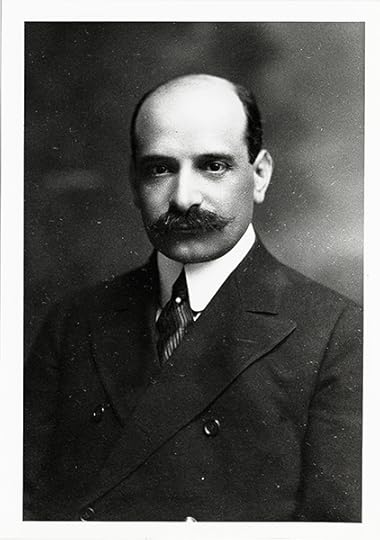
Paul M. Warburg was sworn in as a member of the first Federal Reserve Board on August 10, 1914. He was appointed vice chairman (called “vice governor” before 1935) on August 10, 1916. He resigned from the Board on August 9, 1918.
Warburg was born in Hamburg, Germany, in 1868. He graduated from high school in Hamburg in 1886 and began working for an exporting firm there. He then moved on to positions at shipping and banking companies in London and Paris. He returned to Hamburg in 1895 and became a partner in the banking firm M.M. Warburg and Company, founded by his great-grandfather.
Warburg was a partner in the family firm until 1907. However, in 1902, he moved to New York City and joined his father-in-law’s company as a partner overseeing international loans to several governments. In 1911, he became a naturalized US citizen.
Warburg was considered one of the top authorities on central banking both in Europe and the United States. He was active in the monetary reform movement taking place in the United States in the early 1900s and advocated for the establishment of a US central bank. He and several other bankers helped draft the Aldrich bill of 1910. Although the bill was never brought before Congress, many of its provisions were added to the 1913 Federal Reserve Act, which created the Federal Reserve System. President Woodrow Wilson appointed Warburg to the new entity’s first Board in 1914.
Although Warburg left the Federal Reserve Board in 1918, he continued to serve the Federal Reserve as a member of the Federal Advisory Council (1921–26). He resumed his activities in business and philanthropic circles as well. For example, he founded and was the first chairman of the Executive Committee of the American Acceptance Council in 1919. In 1921, he organized the International Acceptance Bank to promote US government financing of reconstruction in Europe following the war.
Warburg was also a director of the Council on Foreign Relations (1921–32), a trustee of the Institute of Economics (1922–27), and a trustee of the Brookings Institution after it merged with the Institute of Economics in 1927. He also helped establish the Carl Schurz Memorial Foundation in 1930. He served at various times as a director of the Baltimore and Ohio Railroad, Union Pacific Railroad, and Western Union Telegraph Company. Warburg was also a director of the Julliard School of Music and a trustee of Tuskegee College.
Warburg continued to take an active interest in the nation’s monetary affairs and banking system. In March 1929, he warned that the wild stock speculation resulting from stock price increases and improper bank lending practices would have disastrous results if left unchecked. On October 29 of that year, the stock market crashed.
Throughout his career, Warburg was a prolific writer. Most notable among his published works was a two-volume set on the Federal Reserve System published in 1930. The Yale University Library (Manuscripts and Archives) is the repository for Warburg’s papers dating from 1904 to 1932. The collection includes 169 volumes on banking and finance.
Warburg died at his home in New York in 1932. At the time of his death, he was chairman of the Manhattan Company and a director of the Bank of Manhattan Trust Company, Farmers Loan and Trust Company of New York, and First National Bank of Boston. (Source: Federal Reserve History)
More:
https://en.wikipedia.org/wiki/Paul_Wa...
https://en.wikipedia.org/wiki/Warburg...
http://www.jrbooksonline.com/Intl_Jew...
http://www.jta.org/1932/01/15/archive...
http://www.jekyllclub.com/2010/12/the...
https://www.minneapolisfed.org/public...
http://www.ihr.org/jhr/v15/v15n5p33_W...
http://www.whale.to/b/warburg.html
http://www.nndb.com/people/462/000135...
(no image)Federal Reserve System: Its Origin and Growth-Reflections and Recollections by Paul M. Warburg (no photo)
(no image)The Warburgs: The Story Of A Family by David Farrer (no photo)
(no image)Dictionary of American Biography by
 Scribner
Scribner by Paul M. Warburg (no photo)
by Paul M. Warburg (no photo) by Stephen Birmingham (no photo)
by Stephen Birmingham (no photo) by
by
 Ron Chernow
Ron Chernow by
by
 Murray N. Rothbard
Murray N. Rothbard
 Cross of Gold speech given by William Jennings Bryan
Cross of Gold speech given by William Jennings Bryan
An illustration depicting William Jennings Bryan on the shoulders of state representatives at the Democratic National Convention in Chicago in 1896, moments after he gave his "Cross of Gold" speech (Wikimedia Commons)
Cross of Gold speech, July 8, 1896, classic of American political oratory delivered by William Jennings Bryan in closing the debate on the party platform at the Democratic National Convention in Chicago in 1896. In an eloquent attack on the thesis that gold was the only sound backing for currency, Bryan closed with the peroration, “You shall not press down on the brow of labor this crown of thorns, you shall not crucify mankind on a cross of gold.” The speech so electrified the convention that the delegates nominated Bryan as their candidate for president, though he was only 36 years old and his experience as an officeholder was limited to two terms in the U.S. House of Representatives. In November he lost to the Republican candidate, William McKinley. In later years Bryan delivered numerous variations on the speech, some captured on early phonograph recordings. (Source: Encyclopedia Britannica)
William Jennings Bryan

William Jennings Bryan, (born March 19, 1860, Salem, Illinois, U.S.—died July 26, 1925, Dayton, Tennessee) Democratic and Populist leader and a magnetic orator who ran unsuccessfully three times for the U.S. presidency (1896, 1900, 1908). His enemies regarded him as an ambitious demagogue, but his supporters viewed him as a champion of liberal causes. He was influential in the eventual adoption of such reforms as popular election of senators, income tax, creation of a Department of Labor, Prohibition, and woman suffrage. Throughout his career, his Midwestern roots clearly identified him with agrarian interests, in opposition to those of the urban East. (Source: Encyclopedia Britannica)
More:
http://www.let.rug.nl/usa/documents/1...
http://www.thenation.com/article/july...
http://www.dictionary.com/browse/cros...
http://www.thegoldstandardnow.org/wil...
http://projects.vassar.edu/1896/cross...
http://www.history.com/topics/william...
http://historymatters.gmu.edu/d/5354/
https://en.wikipedia.org/wiki/Cross_o...
https://www.youtube.com/watch?v=HeTkT...
http://www.jstor.org/stable/1898096?s...
 by Edward B. Dickinson (no photo)
by Edward B. Dickinson (no photo) by Richard Franklin Bensel (no photo)
by Richard Franklin Bensel (no photo) by Robert W. Cherny (no photo)
by Robert W. Cherny (no photo) by Paolo E. Coletta (no photo)
by Paolo E. Coletta (no photo) by William D. Harpine (no photo)
by William D. Harpine (no photo) by Michael Kazin (no photo)
by Michael Kazin (no photo) by R. Hal Williams (no photo)
by R. Hal Williams (no photo)
 Chester Isaiah Long
Chester Isaiah Long
Chester Isaiah Long (October 12, 1860 – July 1, 1934) was a United States Representative and Senator from Kansas. Born in Greenwood Township, Pennsylvania, he moved with his parents to Daviess County, Missouri, in 1865 and to Paola, Kansas, in 1879. He attended the country schools and graduated from the normal school at Paola in 1880. He taught school for several years, studied law, and was admitted to the bar in 1885, commencing practice in Medicine Lodge, Kansas.
He was a member of the Kansas Senate from 1889 to 1893 and was an unsuccessful candidate for election in 1892 to the Fifty-third Congress. He was elected as a Republican to the Fifty-fourth Congress, serving from March 4, 1895, to March 3, 1897; he was an unsuccessful candidate for reelection in 1896 to the Fifty-fifth Congress, but was elected to the Fifty-sixth, Fifty-seventh, and Fifty-eighth Congresses and served from March 4, 1899, until his resignation, effective March 4, 1903, before the commencement of the Fifty-eighth Congress, to become Senator. He was elected to the U.S. Senate and served from March 4, 1903, to March 3, 1909; he was an unsuccessful candidate for renomination in 1908.
While in the Senate, he was chairman of the Committee on the University of the United States (Fifty-eighth and Fifty-ninth Congresses) and a member of the Committee on the Census (Fifty-ninth and Sixtieth Congresses).
He moved to Wichita in 1911 and continued the practice of law, and was chairman of the commission to revise the general statutes of Kansas from 1921 to 1923. He moved to Washington, D.C., in 1925 and continued the practice of law, and from 1925 to 1926 was the president of the American Bar Association. He died in Washington in 1934; interment was in Old Mission Cemetery, Wichita. (Source: Wikipedia)
More:
https://www.accessgenealogy.com/kansa...
http://specialcollections.wichita.edu...
http://specialcollections.wichita.edu...
http://members-of-congress.insidegov....
http://www.findagrave.com/cgi-bin/fg....
https://www.kshs.org/p/chester-i-long...
https://www.kshs.org/kansapedia/chest...
http://bioguide.congress.gov/scripts/...
https://www.govtrack.us/congress/memb...
 by Kenneth C. Martis (no photo)
by Kenneth C. Martis (no photo) by Jo Anne McCormick Quatannens] (no photo)
by Jo Anne McCormick Quatannens] (no photo) by Thomas Allen McNeal (no photo)
by Thomas Allen McNeal (no photo) by William Elsey Connelley (no photo)
by William Elsey Connelley (no photo) by CQ Press Editors (no photo)
by CQ Press Editors (no photo) by
by
 Robert C. Byrd
Robert C. Byrd
 1908 Democratic Convention
1908 Democratic Convention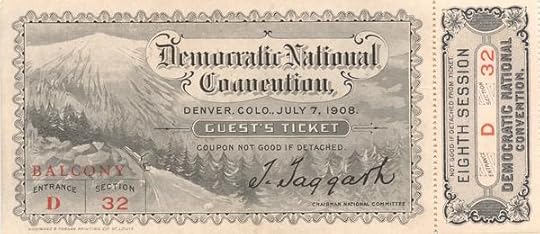
Guest ticket for the Convention
The 1908 Democratic National Convention was the quadrennial Democratic National Convention, the presidential nominating convention of the Democratic Party. It took place from July 7 to July 10, 1908 at Denver Auditorium Arena in Denver, Colorado.
The event is widely considered a significant part of Denver's political and social history.
The 1908 convention was the first convention of a major political party in a Western state. The city would not host another nominating convention until a century later, at the 2008 Democratic National Convention.
The convention was the second Democratic National Convention to include female delegates. The female delegates were Mary C.C. Bradford (Colorado) and Elizabeth Pugsley Hayward (Mrs. Henry J. Hayward) (Utah). Alternate delegates were Mrs. Charles Cook (Colorado), Harriet G. Hood (Wyoming), and Sara L. Ventress (Utah).
The delegates to the convention nominated William Jennings Bryan of Nebraska for President over George Gray of Delaware and John A. Johnson of Minnesota. John W. Kern of Indiana was unanimously declared the candidate for vice-president without a formal ballot after the names of Charles A. Towne, Archibald McNeil, and Clark Howell were withdrawn from consideration. (Source: Wikipedia)
More:
http://www.denverpost.com/opinion/ci_...
http://www.presidentialconventions.co...
http://politicalgraveyard.com/parties...
http://www.coloradoindependent.com/ta...
http://www.historycentral.com/electio...
http://www.c-span.org/video/?280658-1...
http://americacomesalive.com/2008/08/...
http://www.presidency.ucsb.edu/ws/ind...
http://www.foxnews.com/projects/pdf/D...
http://kyhistory.pastperfectonline.co...
http://politicalmemorabilia.com/polit...
https://en.wikipedia.org/wiki/Ellie_C...
http://www.senate.gov/reference/resou...
http://pqasb.pqarchiver.com/baltsun/d...
http://www.ourcampaigns.com/RaceDetai...
(no image)Official Report of the Proceedings of the Democratic National Convention: Held in Denver, Colorado, July 7, 8, 9 and 10, 1908, Resulting in the Nomination of Hon. William Jennings Bryan (of Nebraska) for President and Hon. John Worth Kern (of by Milton W Blumenberg (no photo)
 by Thomas J. Noel (no photo)
by Thomas J. Noel (no photo) by Richard B. Morris (no photo)
by Richard B. Morris (no photo) by Tim Taylor (no photo)
by Tim Taylor (no photo) by Galbraith Schlisinger (no photo)
by Galbraith Schlisinger (no photo)
 Women's suffrage in the United States
Women's suffrage in the United States
Women's suffragists parade in New York City in 1917, carrying placards with signatures of more than a million women
Women's suffrage in the United States, the legal right of women to vote in that country, was established over the course of several decades, first in various states and localities, sometimes on a limited basis, and then nationally in 1920.
The demand for women's suffrage began to gather strength in the 1840s, emerging from the broader movement for women's rights. In 1848, the Seneca Falls Convention, the first women's rights convention, passed a resolution in favor of women's suffrage despite opposition from some of its organizers, who believed the idea was too extreme. By the time of the first National Women's Rights Convention in 1850, however, suffrage was becoming an increasingly important aspect of the movement's activities.
The first national suffrage organizations were established in 1869 when two competing organizations were formed, one led by Susan B. Anthony and Elizabeth Cady Stanton and the other by Lucy Stone. After years of rivalry, they merged in 1890 as the National American Woman Suffrage Association (NAWSA) with Anthony as its leading force.
Hoping the U.S. Supreme Court would rule that women had a constitutional right to vote, suffragists made several attempts to vote in the early 1870s and then filed lawsuits when they were turned away. Anthony actually succeeded in voting in 1872 but was arrested for that act and found guilty in a widely publicized trial that gave the movement fresh momentum. After the Supreme Court ruled against them in 1875, suffragists began the decades-long campaign for an amendment to the U.S. Constitution that would enfranchise women. Much of the movement's energy, however, went toward working for suffrage on a state-by-state basis.
In 1916 Alice Paul formed the National Woman's Party (NWP), a militant group focused on the passage of a national suffrage amendment. Over 200 NWP supporters, the Silent Sentinels, were arrested in 1917 while picketing the White House, some of whom went on hunger strike and endured forced feeding after being sent to prison. Under the leadership of Carrie Chapman Catt, the two-million-member NAWSA also made a national suffrage amendment its top priority. After a hard-fought series of votes in the U.S. Congress and in state legislatures, the Nineteenth Amendment became part of the U.S. Constitution on August 26, 1920. It states, "The right of citizens of the United States to vote shall not be denied or abridged by the United States or by any State on account of sex." (Source: Wikipedia)
More:
https://en.wikipedia.org/wiki/Timelin...
https://en.wikipedia.org/wiki/Ninetee...
http://www.history.com/topics/womens-...
http://www.historynet.com/womens-suff...
http://www.archives.gov/historical-do...
http://history.house.gov/Exhibitions-...
http://www.biography.com/people/group...
https://memory.loc.gov/ammem/naw/naws...
 by Jean H. Baker (no photo)
by Jean H. Baker (no photo) by Ellen Carol DuBois (no photo)
by Ellen Carol DuBois (no photo) by Ellen Carol DuBois (no photo)
by Ellen Carol DuBois (no photo) by Faye E. Dudden (no photo)
by Faye E. Dudden (no photo) by Eleanor Flexner (no photo)
by Eleanor Flexner (no photo) by Elizabeth Frost-Knappman (no photo)
by Elizabeth Frost-Knappman (no photo) by Sara Hunter Graham (no photo)
by Sara Hunter Graham (no photo) by Joelle Million (no photo)
by Joelle Million (no photo) by
by
 Anne Firor Scott
Anne Firor Scott by
by
 Elizabeth Cady Stanton,
Elizabeth Cady Stanton,
 Susan B. Anthony, Matilda Joslyn Gage (no photo) and Ida Husted Harper (no photo)
Susan B. Anthony, Matilda Joslyn Gage (no photo) and Ida Husted Harper (no photo)
 Senator Thomas Pryor Gore from Oklahoma
Senator Thomas Pryor Gore from Oklahoma
GORE, Thomas Pryor, a Senator from Oklahoma; born near Embry, Webster County, Miss., December 10, 1870; lost the sight of both eyes as a boy; attended the public schools; graduated from the normal school at Walthall, Miss., in 1890; taught school in 1890 and 1891; graduated from the law department of Cumberland University, Lebanon, Tenn., in 1892; admitted to the bar in 1892 and commenced practice in Walthall, Miss.; moved to Corsicana, Tex., in 1895; unsuccessful Populist candidate for election in 1898 to the Fifty-sixth Congress; moved to Lawton, Okla., in 1901 and continued the practice of law; member, Territorial council 1903-1905; upon the admission of Oklahoma as a State into the Union was elected as a Democrat to the United States Senate for the term ending March 3, 1909; reelected in 1908 and again in 1914 and served from December 11, 1907, to March 3, 1921; unsuccessful candidate for renomination in 1920; chairman, Committee on Railroads (Sixty-second Congress), Committee on Agriculture and Forestry (Sixty-third through Sixty-fifth Congresses), Committee on Expenditures in the Department of Justice (Sixty-sixth Congress); member of the Democratic National Committee 1912-1916; appointed by President Woodrow Wilson in 1913 as a member of the Commission to Investigate and Study Rural Credits and Agricultural Cooperative Organizations in European Countries; again elected to the United States Senate in 1930 and served from March 4, 1931, to January 3, 1937; unsuccessful candidate for renomination in 1936; chairman, Committee on Interoceanic Canals (Seventy-third and Seventy-fourth Congresses); practiced law in Washington, D.C., until his death on March 16, 1949; initially interred at Rosehill Cemetery, Oklahoma City, Okla; reinterred on July 19, 1949 in Fairlawn Cemetery in Oklahoma City. (Source: Biographical Directory of the United States Congress)
More:
https://en.wikipedia.org/wiki/Thomas_...
http://www.okhistory.org/publications...
http://digital.library.okstate.edu/Ch...
http://digital.library.okstate.edu/Ch...
https://ffrf.org/news/day/famous-free...
http://www.people.com/people/archive/...
https://tshaonline.org/handbook/onlin...
https://en.wikipedia.org/wiki/Oklahom...
 by Kenny Arthur Franks (no photo)
by Kenny Arthur Franks (no photo) by Worth Robert Miller (no photo)
by Worth Robert Miller (no photo) by Kenneth C. Martis (no photo)
by Kenneth C. Martis (no photo) by Bonnie Stahlman Speer (no photo)
by Bonnie Stahlman Speer (no photo) by
by
 Gore Vidal
Gore Vidal
 Gentlemen's Agreement of 1907
Gentlemen's Agreement of 1907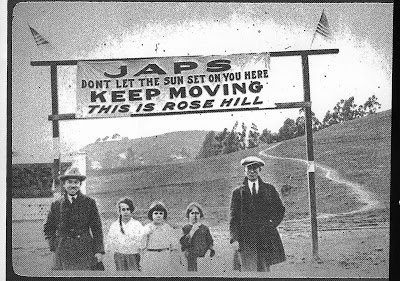
The Gentlemen's Agreement of 1907 was an informal agreement between the United States and the Empire of Japan whereby the United States of America would not impose restriction on Japanese immigration, and Japan would not allow further immigration to the U.S. The goal was to reduce tensions between the two powerful Pacific nations. The agreement was never ratified by Congress, and was ended by the Immigration Act of 1924.
Tensions had been rising in Tokyo and San Francisco, and after the decisive Japanese victory against Russia, Japan demanded treatment as an equal. The result was a series of six notes communicated between Japan and the United States from late 1907 to early 1908.
The immediate cause of the Agreement was anti-Japanese nativism in California. In 1906, the San Francisco, California Board of Education passed a regulation whereby children of Japanese descent would be required to attend separate, racially specific schools. At the time, Japanese immigrants made up approximately 1% of the population of California; many of them had immigrated under the treaty in 1894 which had assured free immigration from Japan.
In the Agreement, Japan agreed not to issue passports for Japanese citizens wishing to work in the continental United States, thus effectively eliminating new Japanese immigration to America. In exchange, the United States agreed to accept the presence of Japanese immigrants already residing in America, and to permit the immigration of wives, children and parents, and to avoid legal discrimination against Japanese American children in California schools.
There was also a strong desire on the part of the Japanese government "to preserve the image of the Japanese people in the eyes of the world" Japan did not want America to pass any legislation confronting the Japanese immigrants, in response to what happened to Chinese under the Chinese Exclusion Act. President Theodore Roosevelt, who had a positive opinion of Japan, accepted the Agreement as proposed by Japan as an alternative to more formal, restrictive immigration legislation.
The government of Japan continued to issue passports for immigration to the Territory of Hawaii, from where immigrants could move on to the continental United States with few controls. (Source: Wikipedia)
More:
http://www.britannica.com/event/Gentl...
http://www.history.com/topics/gentlem...
http://encyclopedia.densho.org/Gentle...
http://www.upa.pdx.edu/IMS/currentpro...
http://sk.sagepub.com/reference/ethni...
http://immigrationtounitedstates.org/...
http://ubiquitous.image.coocan.jp/Jap...
(no image)Japanese in the United States: A Critical Study of the Problems of the Japanese Immigrants and their Children by Yamato Ichihashi (no photo)
(no image)Immigrant Institutions: The Organization of Immigrant Life by George E. Pozzetta (no photo)
 by Richard T. Schaefer (no photo)
by Richard T. Schaefer (no photo) by Roger Daniels (no photo)
by Roger Daniels (no photo) by Bill Ong Hing (no photo)
by Bill Ong Hing (no photo) by Xiaojian Zhao (no photo)
by Xiaojian Zhao (no photo) by Sang Chi (no photo)
by Sang Chi (no photo) by David Scott Fitzgerald (no photo)
by David Scott Fitzgerald (no photo) by Roger Daniels (no photo)
by Roger Daniels (no photo) by Charles E. Neu (no photo)
by Charles E. Neu (no photo) by
by
 Eric Foner
Eric Foner
 Teri wrote: "Gary wrote: "I am I the only one who is lost in these discussions? I cant tell if I am discussing the book or the bibliography of the book? : )"
Teri wrote: "Gary wrote: "I am I the only one who is lost in these discussions? I cant tell if I am discussing the book or the bibliography of the book? : )"Hi Gary. This particular thread is indeed a Glossar..."
Yes that does help. I have been involved in other discussions but this one seems to be very involved. Perhaps it is because there are so many characters in the story.
Although at times, it seems like some people will go off in several different directions as if they are reading several books on the subject at the same time.
Books mentioned in this topic
The Life of Lenin (other topics)Lenin and Revolutionary Russia (other topics)
Workers Against Lenin: Labour Protest and the Bolshevik Dictatorship (other topics)
Lenin and His Comrades (other topics)
Lenin Reloaded: Toward a Politics of Truth (other topics)
More...
Authors mentioned in this topic
Stephen J. Lee (other topics)Sebastian Budgen (other topics)
Louis Fischer (other topics)
Jonathan Aves (other topics)
Yuri Felshtinsky (other topics)
More...





As President of Princeton:
Woodrow Wilson entered Princeton as a member of the Class of 1879. “Tommy,” as his classmates called him, was an eager student and an acknowledged leader. Not satisfied with the courses offered by the College, he supplemented the formal curriculum with an ambitious program of independent reading. Still feeling less than fully occupied, he became managing editor of the Daily Princetonian and organized a student club for discussion of public affairs. His classmates elected him speaker of the American Whig Society, one of two principal campus groups. Pursuing athletic interests, he became secretary of the Football Association and president of the Baseball Association.
After graduation, he went to law school at the University of Virginia and practiced in Atlanta. Disillusioned by the tedium and materialism of legal damage suits, he enrolled in Johns Hopkins for graduate work in political science and history. His doctoral dissertation, “Congressional Government,” led to teaching positions at Bryn Mawr, Wesleyan, and finally Princeton.
As professor of jurisprudence, Wilson built up a strong prelaw curriculum. He was soon voted most popular teacher and became friend and counselor to countless students who were attracted by his warmth and high-mindedness. During the sesquicentennial celebration of 1896, he delivered the keynote address: “Princeton in the Nation’s Service.”
When the trustees elected him president, Wilson proposed a $12.5 million program to transform Princeton into a full-scale university.
At the time this was a staggering sum, almost 25 times greater than the annual budget, but the trustees approved it immediately.
He began by creating an administrative structure — departments of instruction with heads that reported directly to him. In place of the aimless elective system, he substituted a unified curriculum of general studies during the freshman and sophomore years, capped by concentrated study in one discipline (the academic “major”) during the junior and senior years. He also added an honors program for able and ambitious students. Wilson tightened academic standards so severely that enrollment declined sharply until 1907.
Supported by the first all-out alumni fundraising campaign in Princeton’s history, he doubled the faculty overnight through the appointment of almost 50 young assistant professors, called “preceptors,” charged with guiding students through assigned reading and small group discussion. With a remarkable eye for quality, he assembled a youthful faculty with unusual talent and zest for teaching.
In strengthening the science program, Wilson called for basic, unfettered, “pure” research. In the field of religion, he made biblical instruction a scholarly subject. He broke the hold of conservative Presbyterians over the board of trustees, and appointed the first Jew and the first Roman Catholic to the faculty.
Before the end of his term, he authorized fellow members of the Class of 1879 to cast two heroic bronze tigers for the front steps of Nassau Hall. (Tigers appeared as mascots during McCosh’s tenure.) After modernizing the administration, the curriculum, and teaching methods, Wilson proposed the creation of quadrangles, or “colleges,” in which undergraduates of all four classes would live with their own recreational facilities and resident faculty masters. Membership would be by assignment or lot.
Twenty-five years after his death, the trustees named the School of Public and International Affairs for him. Sixty years after the defeat of his “quad plan,” they carved out an area of the campus — six dormitories and a dining and social center — as a distinct residential complex known as Woodrow Wilson College. The trustees also created the Woodrow Wilson Award — the highest honor the University bestows upon an alumnus in recognition of his or her distinguished public service.
(Source: Princeton)
As President of the United States
Woodrow Wilson, a leader of the Progressive Movement, was the 28th President of the United States (1913-1921). After a policy of neutrality at the outbreak of World War I, Wilson led America into war in order to "make the world safe for democracy."
Like Roosevelt before him, Woodrow Wilson regarded himself as the personal representative of the people. "No one but the President," he said, "seems to be expected ... to look out for the general interests of the country." He developed a program of progressive reform and asserted international leadership in building a new world order. In 1917 he proclaimed American entrance into World War I a crusade to make the world "safe for democracy."
Wilson had seen the frightfulness of war. He was born in Virginia in 1856, the son of a Presbyterian minister who during the Civil War was a pastor in Augusta, Georgia, and during Reconstruction a professor in the charred city of Columbia, South Carolina.
After graduation from Princeton (then the College of New Jersey) and the University of Virginia Law School, Wilson earned his doctorate at Johns Hopkins University and entered upon an academic career. In 1885 he married Ellen Louise Axson.
Wilson advanced rapidly as a conservative young professor of political science and became president of Princeton in 1902.
His growing national reputation led some conservative Democrats to consider him Presidential timber. First they persuaded him to run for Governor of New Jersey in 1910. In the campaign he asserted his independence of the conservatives and of the machine that had nominated him, endorsing a progressive platform, which he pursued as governor.
He was nominated for President at the 1912 Democratic Convention and campaigned on a program called the New Freedom, which stressed individualism and states' rights. In the three-way election he received only 42 percent of the popular vote but an overwhelming electoral vote.
Wilson maneuvered through Congress three major pieces of legislation. The first was a lower tariff, the Underwood Act; attached to the measure was a graduated Federal income tax. The passage of the Federal Reserve Act provided the Nation with the more elastic money supply it badly needed. In 1914 antitrust legislation established a Federal Trade Commission to prohibit unfair business practices.
Another burst of legislation followed in 1916. One new law prohibited child labor; another limited railroad workers to an eight-hour day. By virtue of this legislation and the slogan "he kept us out of war," Wilson narrowly won re-election.
But after the election Wilson concluded that America could not remain neutral in the World War. On April 2,1917, he asked Congress for a declaration of war on Germany.
Massive American effort slowly tipped the balance in favor of the Allies. Wilson went before Congress in January 1918, to enunciate American war aims--the Fourteen Points, the last of which would establish "A general association of nations...affording mutual guarantees of political independence and territorial integrity to great and small states alike."
After the Germans signed the Armistice in November 1918, Wilson went to Paris to try to build an enduring peace. He later presented to the Senate the Versailles Treaty, containing the Covenant of the League of Nations, and asked, "Dare we reject it and break the heart of the world?"
But the election of 1918 had shifted the balance in Congress to the Republicans. By seven votes the Versailles Treaty failed in the Senate.
The President, against the warnings of his doctors, had made a national tour to mobilize public sentiment for the treaty. Exhausted, he suffered a stroke and nearly died. Tenderly nursed by his second wife, Edith Bolling Galt, he lived until 1924.
(Source: The White House)
More:
https://en.wikipedia.org/wiki/Woodrow...
http://www.history.com/topics/us-pres...
http://millercenter.org/president/wilson
http://www.biography.com/people/woodr...
https://www.wilsoncenter.org/about-wo...
http://www.woodrowwilson.org/about/bi...